WNCST 2021 Plenary & Keynote Speakers
WNCST 2021 aims to bring together Indian and International communities (students, scientists, engineers and stakeholders from academia, government laboratories, industry and other organisations) working in the field of nanoscale science and technology to discuss new and exciting advances in the field
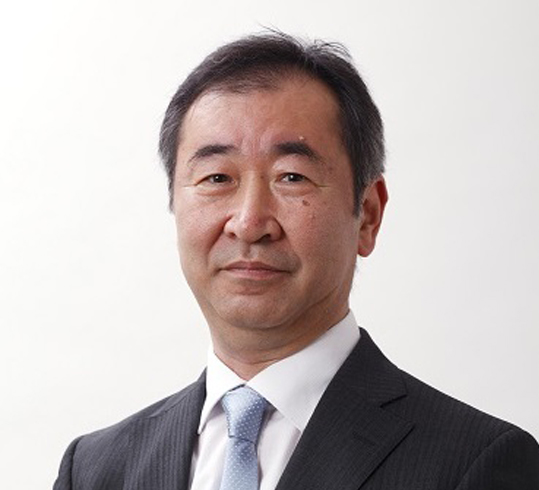
Dr. Takaaki Kajita
View More

Dr. Takaaki Kajita
Nobel Laureate in Physics (2015)
University of Tokyo, JapanTakaaki Kajita is a Japanese physicist, known for neutrino experiments at the Kamiokande and its successor, Super-Kamiokande. In 2015, he was awarded the Nobel Prize in Physics jointly with Canadian physicist Arthur B. McDonald. On 1 October 2020, he became the president of the Science Council of Japan.
He studied physics at the Saitama University and graduated in 1981. He received his doctorate in 1986 at the University of Tokyo. At the University of Tokyo, he joined Masatoshi Koshiba's research group because neutrinos "seemed like they might be interesting".
Since 1988, Kajita has been at the Institute for Cosmic Radiation Research, University of Tokyo, where he became an assistant professor in 1992 and professor in 1999.
He became director of the Center for Cosmic Neutrinos at the Institute for Cosmic Ray Research (ICRR) in 1999. As of 2017, he is a Principal Investigator at the Institute for the Physics and Mathematics of the Universe in Tokyo, and Director of ICRR.
In 1998, Kajita's team at the Super-Kamiokande found that when cosmic rays hit the Earth's atmosphere, the resulting neutrinos switched between two flavours before they reached the detector under Mt. Kamioka. This discovery helped prove the existence of neutrino oscillation and that neutrinos have mass. In 2015, Kajita shared the Nobel Prize in Physics with Canadian physicist Arthur McDonald, whose Sudbury Neutrino Observatory discovered similar results. Kajita's and McDonald's work solved the longstanding Solar neutrino problem, which was a major discrepancy between the predicted and measured Solar neutrino fluxes, and indicated that the Standard Model, which required neutrinos to be massless, had weaknesses. In a news conference at the University of Tokyo, shortly after the Nobel announcement, Kajita said, "I want to thank the neutrinos, of course. And since neutrinos are created by cosmic rays, I want to thank them, too.
One of the first people Kajita called after receiving the Nobel Prize was 2002 Nobel physics laureate Masatoshi Koshiba, his former mentor and a fellow neutrino researcher.
Kajita is currently the principal investigator of another ICRR project located at the Kamioka Observatory, the KAGRA gravitational wave detector
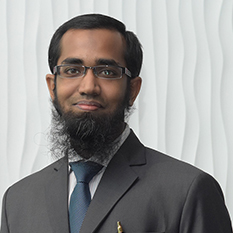
Dr. Abdul Khaliq Rasheed
Xiamen University, Malaysia
View More

Dr. Abdul Khaliq Rasheed
Xiamen University, Malaysia
Dr Abdul Khaliq Rasheed is experienced in interdisciplinary research involving graphene, nanoscale heat transfer, nanotribology and bio-heat transfer. Since 2007, he has been involved in the production, characterisation and testing of advanced heat transfer fluids popularly known as nanofluids and nanolubricants. His PhD work on graphene-based nanolubricants is expected to be commercialised in Malaysia and other countries by 2018. He is currently working at the Research Centre for Nano-Materials and Energy Technology at Sunway University, where he designs and develops nanolubricants and nanofluids for automotive and renewable energy systems. Dr Rasheed is also involved in industrial consultancy, corporate social responsibility projects and tertiary/higher education consulting. He feels honoured to have been introduced to nanofluids and graphene by Professor Sarit Kumar Das at the Indian Institute of Technology Madras during 2007-2009.
Title: Augmented thermal conductivity using nanoparticles in PCR for the rapid detection of COVID-19
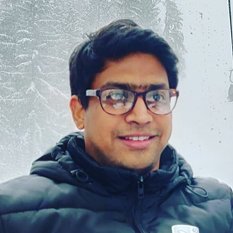
Dr. Abinash Tripathy
ETH Zurich, Switzerland
View More

Dr. Abinash Tripathy
ETH Zurich, Switzerland
Dr. Abinash Tripathy is a Postdoctoral Research Scientist in the Laboratory of Thermodynamics in Emerging Technologies, Department of Mechanical and Process Engineering at ETH, Zurich, Switzerland. He did his PhD in Nanoscience and Engineering at Indian Institute of Science, Bangalore [2014-2018] and M.Tech in Lasers and Photonics from Indian Institute of Technology, Kanpur [2011-2013]. Received B.Tech in Instrumentation and Electronics Engineering from National Institute of Science and Technology, Orissa in 2011. During his B.Tech he received the Institute Silver medal for the best academic record in the graduating class of the department. Afterwards in PhD, he received the prestigious Visvesvaraya Fellowship from the Ministry of Electronics and Information Technology, Government of India and Newton-Bhabha Fellowship from British Council and DBT, Government of India. He was also awarded Marie-Curie Postdoctoral Fellowship in 2018. In December 2016, he was Invited to attend the Early-career leader’s day at Royal Society of Chemistry, Burlington House, Piccadilly, London. His research area is in the field of surface science and engineering. He tries to develop smart surfaces for antibiofouling, antiwetting and condensation applications.
Title: Environmental Friendly and Scalable Fabrication of Antibacterial ZnO Nanostructured Surfaces
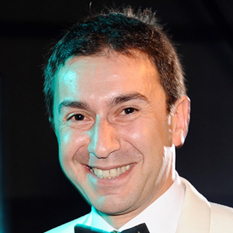
Dr. Adam Lee
RMIT University, Australia
View More

Dr. Adam Lee
RMIT University, Australia
Editor-in-Chief of Materials Today Chemistry (Elsevier)
Associate Editor of Energy and Environmental Materials (Wiley)
Professor Adam Lee is Professor of Sustainable Chemistry in the School of Science at RMIT University. He holds a BA(Hons) in Natural Sciences and PhD in surface science and catalysis from the University of Cambridge. Following academic positions at Hull and York universities, he has held Chair appointments at Cardiff, Warwick, Monash, and Aston universities, in addition to a prestigious EPSRC Leadership Fellowship. His research addresses the rational design of functional materials for sustainable chemical processes and energy production, and the development of in-situ/operando methods providing molecular insight into surface reactions. He was awarded the 2000 CR Burch Prize by the British Vacuum Council, the 2004 Fonda-Fasella Prize of the Elettra synchrotron, the 2011 McBain Medal of the Royal Society of Chemistry and the Society of Chemical Industry, and the 2012 Beilby Medal of the Royal Society of Chemistry, IOM3, and the Society of Chemical Industry. Professor Lee’s research interests span heterogeneous catalysis, nanoporous solids, green chemistry, and synchrotron science. He has authored over 260 articles (h-index 66, 15466 citations) and delivered 40 invited plenary and keynote lectures. He has graduated over 30 PhD and MSc students, is a Fellow of the Royal Society of Chemistry and Royal Australian Chemical Institute and Associate Fellow of the IChemE and serves on several journal editorial boards. He is also Distinguished Visiting Professor at Zhengzhou University in China, Editor-in-Chief of Materials Today Chemistry (Elsevier) and Associate Editor of Energy and Environmental Materials (Wiley).
Title: Spatially orthogonal materials for catalytic cascades
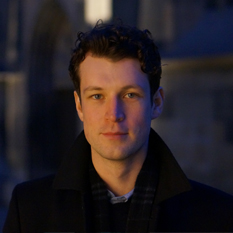
Dr. Adnan Mehonic
University College London, UK
View More

Dr. Adnan Mehonic
University College London (UCL), UK
Adnan Mehonic (Ph.D. in electronic engineering at UCL, UK, 2014) is a lecturer in nanoelectronics and a Royal Academy of Engineering Research fellow in the Department of Electrical and Electronic Engineering, UCL. He works on the development of energy‐efficient computing systems (neuromorphic systems) based on memristors. The work includes co‐design of devices, circuits, and algorithms that would enable on‐chip implementation of ML/AI. He is interested in both accelerators for conventional ML and non‐conventional methods for information processing (e.g., spike‐based computing). He has published more than 40 journal papers and 60 conference proceedings. He holds five international patents and is a co‐founder of Intrinsic Semiconductor Technologies, the start-up set up to commercialise silicon oxide memristor technology.
Title: Memristors – from Memory to the Future of the Energy Efficient and Brain-Inspired Computing
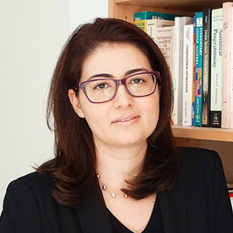
Dr. Aida Todri-Sanial
View More

Dr. Aida Todri-Sanial, HDR
Director of Research, CNRS
Visiting Fellow, University of Cambridge, UK
Franco-British Young Leader 2018
CNRS-LIRMM/University of Montpellier, France
Aida Todri-Sanial received the B.S. degree in electrical engineering from Bradley University, IL in 2001, M.S. degree in electrical engineering from Long Beach State University, CA, in 2003 and a Ph.D. degree in electrical and computer engineering from the University of California, Santa Barbara, in 2009. She is currently a Director of Research for the French National Council of Scientific Research (CNRS) attached to Laboratoire d’Informatique de Robotique et de Microélectronique de Montpellier (LIRMM). Dr. Todri-Sanial was a visiting fellow at the Cambridge Graphene Center and Wolfson College at the University of Cambridge, UK during 2016-2017. Previously, she was an R&D Engineer for Fermi National Accelerator Laboratory, IL. She has also held visiting research positions at Mentor Graphics, Cadence Design Systems, STMicroelectronics and IBM TJ Watson Research Center. Her research interests focus on emerging technologies and novel computing paradigms such as neuromorphic and quantum computing. Web:https://www.lirmm.fr/aida-todri-sanial/
Title: From materials, devices to architectures for energy efficient neuromorphic computing based on oscillatory neural networks

Dr. Andrew Wee
NUS, Singapore
View More

Dr. Andrew Wee
NUS, Singapore
Associate Editor ACS Nano
Professor Andrew Wee is the Class of ‘62 Chaired Professor of Physics and former Vice President (University and Global Relations) at the National University of Singapore (2014-19) Prof Wee, who was Dean of the NUS Faculty of Science from April 2007 to March 2014, is past President of the Singapore National Academy of Science. He is also the Director of the Surface Science Laboratory in the Department of Physics at the NUS Faculty of Science, and an adjunct scientist at the Agency of Science, Technology and Research’s Institute of Materials Research and Engineering. Prof Wee was awarded the President’s medal in 2008 by the Institute of Physics, Singapore, as well as a UK-Singapore Partners in Science Collaboration Award in 2006 as a visiting scientist to Imperial College. Prof Wee’s research interests are in surface and nanoscale science, scanning tunneling microscopy and synchrotron radiation studies of the molecule-substrate interface, graphene and related nanomaterials. A fellow of the Institute of Physics, UK, the Singapore National Academy of Science, as well as the Institute of Physics, Singapore, he has published more than 400 internationally refereed scientific papers. He is an Associate Editor of the journal ACS Nano since 2011, and serves or has served on several journal editorial boards including Applied Physics Letters-Journal of Applied Physics (2009-2011), Surface and Interface Analysis (2005-) and Surface Review and Letters (2002-). He holds a Bachelor of Arts (Honours) in Physics as well as a Masters degree from the University of Cambridge. He received his DPhil from the University of Oxford.
Title: Ferromagnetic 2D Materials
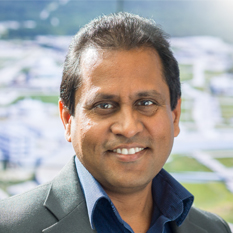
Dr. Anirudha V. Sumant
Argonne National Laboratory, USA
View More

Dr. Anirudha V. Sumant
Argonne National Laboratory, USA
Dr. Anirudha Sumant is a Group Leader, Nanofabrication and Devices Group and Materials Scientist at the Center for Nanoscale Materials, Argonne National Laboratory and leading the research on nanocarbon materials including CVD-diamond, carbon nanotube, graphene as well as other 2D materials. He is a leading expert on energy-efficient systems based on nanocarbon materials. His recent work on demonstrating superlubricity (near zero friction) at engineering scale opened a new era in solid lubrication technology. He has more than 25 years of research experience in the synthesis, characterization and developing applications of CVD-diamonds. His main research interests includes superlubricity, nucleation and growth mechanism of diamond and other carbon materials, novel synthesis routes, surface chemistry, nanoelectronics, micro/ nano-scale tribology, and micro-nanofabrication. He is the author and co-author of more than 130 peer-reviewed journal/proceedings publications, 2 book chapters, and has 29 granted patents, 17 pending. The list of his awards include four R&D 100 awards, NASA Tech Brief Magazine Award, and three TechConnect National Innovation Awards. He co-developed a nanotechnology educational kit “Next Gen STEM kit” for high school students in collaboration with United Scientific Supplies Inc. which is now available to high schools across the nation, that gives students first-hand nanofabrication experience right in the their classroom. He was recognized by Pinnacle of Education Award from Board of Governors of UChicago/Argonne LLC for this achievement. He has presented his research via numerous invited/keynote talks as well as through TEDx talk. His research in diamond and graphene materials helped in the formation of several start-up companies. He is advisory board member of Applied Physics Letters and a member of MRS, STLE and AVS.
Argonne web page: https://www.anl.gov/profile/anirudha-v-sumant
Research highlights and portfolio: https://www.anl.gov/novel-nanocarbon-materials
LinkedIn profile: http://www.linkedin.com/in/anisumant
Google scholar: http://scholar.google.com/citations?user=4dDO-10AAAAJ&hl=en&oi=ao
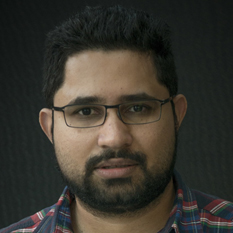
Dr. Aravind Vijayaraghavan
View More

Dr. Aravind Vijayaraghavan
University of Manchester, UK
Dr. Vijayaraghavan is a Reader in Nanomaterials in the Department of Materials and the National Graphene Institute at The University of Manchester. He leads the Nanofunctional Materials Group. He is also the Head of Business Engagement (Advanced Manufacturing) for the Faculty of Science & Engineering. His research involves the science and technology of graphene and 2-dimensional materials, particularly for applications in composites, electronics, sensors and biotechnology. He was previously a senior post-doctoral research associate at Massachusetts Institute of Technology, USA and an Alexander von Humboldt Fellow at Karlsruhe Institute of Technology, Germany. He was awarded his MEng (2002) and PhD (2006) from Rensselaer Polytechnic Institute, USA and his BTech (2000) from the Indian Institute of Technology - Madras, India. He has published over 90 papers in international peer reviewed journals and delivered over 80 presentations at international conferences. He has filed 7 patents. He is the founder of two spin-out companies, Atomic Mechanics Ltd. and Grafine Ltd. He is also a leader in public engagement and science communication has won numerous awards for the same.
Title: Graphene based nano-electro-mechanical sensors
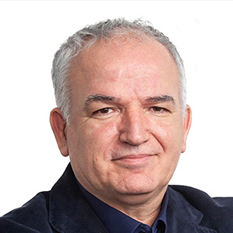
Dr. Arben Merkoçi
View More

Dr. Arben Merkoçi
Institut Català de Nanociència i Nanotecnologia, Spain
Co-Editor In Chief of Biosensors and Bioelectronics
Arben Merkoçi is currently ICREA Professor and director of the Nanobioelectronics & Biosensors Group at Institut Català de Nanociencia i Nanotecnologia (ICN2), part of Barcelona Institute of Science and Technology (BIST). After his PhD (1991) at Tirana University (Albania), in the topic of Ion-Selective-Electrodes (ISEs) Dr. Merkoçi worked as postdoc and senior researcher/invited professor in the field of nanobiosensors and lab-on-a-chip technologies in Italy, Spain, USA and since 2006 at ICN2. Prof. Merkoçi research is focused on the design and application of cutting edge nanotechnology and nanoscience based cost/efficient biosensors. The paper/plastic-based nanobiosensors involve integration of biological molecules (DNA, antibodies, cells and enzymes) and other (bio)receptors with micro- and nanostructures/motors and applied in diagnostics, environmental monitoring or safety and security. He has published around 310 peer review research papers (H index: 67 WOS; 81 GS), supervised 30 PhD students and has been invited to give plenary lectures and keynote speeches in around 200 occasions in various countries. Prof. Merkoçi is Co-Editor In Chief of Biosensors and Bioelectronics and member of Editorial Board of other journals. He is co-founder of two spin-off companies, PaperDrop dedicated to nanodiagnostics and GraphenicaLab to electronic printing. See more details on his group and CV at: https://icn2.cat/en/nanobioelectronics-and-biosensors-group https://www.icrea.cat/security/files/researchers/files-maintenance/full_cv_amerkoci_0.pdf
Title: Nanobiosensors for diagnostics
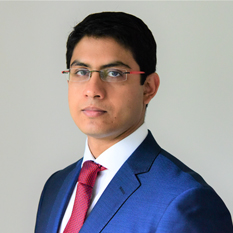
Dr. Aritra Ghosh
View More

Dr. Aritra Ghosh
University of Exeter, UK
Dr Aritra Ghosh, lecturer in integrated renewables, Renewable Energy Research Group, University of Exeter, UK, obtained his PhD in the area of Applied Energy from the Technological University of Dublin, Ireland. His research span includes material development and energetic analysis for solar and less energy-hungry building related application. Inclusion of nano particles in smart window, solar cells, and self-cleaning coating is one of his prime research interest now. He has published several scientific articles in leading peer reviewed journals, has presented his work in international conferences and has delivered invited talks. He acts as guest editor, board member and reviewer for several international journals.
Title: Nano material/coating as self-cleaning coating for PV application
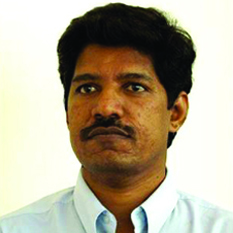
Dr. S. Balakumar
View More

Dr. S. Balakumar
University of Madras, India
Dr. S. Balakumar works as professor in University of Madras, India. His Specialization includes, Multifunctional Nanomaterials, Multiferroics nanomaterials, Metal Oxide Nanostructures for sensor and Photocatalytic application, Micro/Nanoelectronic Fabrication Processes, Cu-interconnects,Chemical Mechanical Planarization and Clean technology and Nanobioglasses for medical applications. He won several prestigious awards such as IME Team Excellence Award on Nanowires project in 2008, IME Long Term Service award in 2007 and Senior Fellow of the UNESCO-UNISA CHAIR in Nanosciences/Nanotechnology from 2014. He is a Member of several organizations like Life member in Indian Crystal Growth Association (Since 1993) Materials Research Society, India, Materials Research Society, USA, Electrochemical Society, USA (Since 2003), Member in International Research Club, A-Star, Singapore, IEEE Senior Member, Materials Research Society, Singapore and Nanosciences African Network.Dr. S. Balakumar has a Total Journals: 118 published.
Title: Nanostructured Bioactive Materials based composites Towards Biomedical Applications
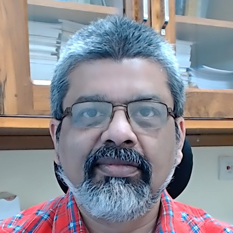
Dr. Chacko Jacob
View More

Dr. Chacko Jacob
Indian Institute of Technology, Kharagpur, India
Dr. Chacko Jacob is currently the Head and a Professor in the Materials Science Centre at IIT Kharagpur. He has a BTech in Ceramic Engineering from IIT-BHU and an MTech in Materials Science from IIT Kanpur. He subsequently got his PhD in Materials Science and Engineering from Case Western Reserve University, Cleveland, Ohio (USA) and worked as a Research Associate for about two years in the same department. Thereafter, he was Japan Society for the Promotion of Science (JSPS) post-doctoral fellow at Kyoto Institute of Technology for a couple of years and joined IIT Kharagpur in January 2001. He is a recipient of the MRSI Medal from the Materials Research Society of India in 2007. His primary areas of research are in nanomaterials, nanomanipulation of objects, wide bandgap semiconductors, etc.
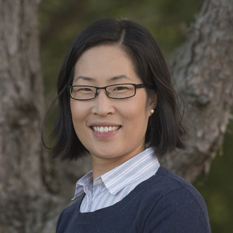
Dr. Judy J. Cha
View More

Dr. Judy J. Cha
Yale University, USA
Judy J. Cha is the Carol & Douglas Melamed Associate Professor in the Department of Mechanical Engineering and Materials Science at Yale University. Prior to Yale, she was a post-doctoral researcher at Stanford University in the Department of Materials Science and Engineering. She received her Ph.D. in Applied Physics from Cornell University in 2009. Notable awards she received include the Gordon & Betty Moore EPiQS Synthesis Investigator Award (2019), the NSF CAREER (2018), the Canadian Institute for Advanced Research (CIFAR) Azrieli Global Scholar for quantum materials (2017), the Yale Arthur Greer Memorial Prize (2016), the IBM Faculty Award (2014), the Presidential Student Award from Microscopy Society of America (2010), and the Graduate Student Silver Award at the Spring Materials Research Society meeting (2008). Her research focuses on synthesis and transport measurements of topological nanomaterials and two-dimensional transition metal dichalcogenides; in situ TEM studies of phase transformations of nanomaterials; and potential applications of these systems in quantum computing and energy.
Title: Phase Transformations of Nanoscale Systems Using In Situ TEM
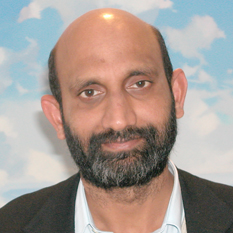
Dr. Chennupati Jagadish A. C.
View More

Dr. Chennupati Jagadish A. C.
Australian National University, Australia
Editor-in-Chief of Applied Physics Reviews
Editor of the Journal Semiconductor Technology and Science
Jagadish received the B.Sc. degree from Nagarjuna University, Guntur, India in 1977, the M.Sc(Tech) degree from Andhra University, Waltair, India in 1980 and the M.Phil. and Ph.D. degrees from the University of Delhi, India in 1982 and 1986, respectively. He was a Lecturer in Physics and Electronics at S.V. College, University of Delhi, during 1985-88 and worked at Queen’s University, Kingston, Canada, during 1988-90 as a post-doctoral research fellow. He moved to Australia in 1990 and established a major research program in the field of optoelectronics and nanotechnology. He is currently a Distinguished Professor and Head of Semiconductor Optoelectronics and Nanotechnology Group in the Department of Electronic Materials Engineering, Research School of Physical Sciences and Engineering, the Australian National University. He was the Founding Director of Australian National Fabrication Facility, ACT node (2007-March 202) and Convenor of the Australian Nanotechnology Network. He holds honorary positions at University of Electronic Science and Technology of China, Chengdu; University of Tokyo, Anna University, Mangalore University, ICT Mumbai, Hefei University of Technology, Taoyuan University of Technology, Nanjing University and Oxford University. He has served as Vice-President and Secretary Physical Sciences of the Australian Academy Science during 2012-2016. He has served as as President of Australian Materials Research Society (2016-19) and President of IEEE Photonics Society (2018, 2019). His research interests include compound semiconductor optoelectronics, nanotechnology, photovoltaics and neuroscience and neurotechnology.
Jagadish is a winner of 2000 Institute of Electrical and Electronics Engineers, Inc (USA) (IEEE) Third Millennium Medal and a Distinguished Lecturer of IEEE Nanotechnology Council (NTC), IEEE Lasers and Electro-Optics Society (LEOS) and IEEE Electron Devices Society (EDS). He has published more than 950 research papers (670 journal papers), holds 5 US patents, co-authored a book, co-edited 15 books, guest edited 18 special issues of journals and edited 12 conference proceedings. Jagadish has served as President of the IEEE Nanotechnology Council (2008 and 2009), Vice-President (Publications) of NTC (2004-2005), President-Elect of NTC (2007), Past-President (2010-2011) and Vice-President (Membership and Regional Activities- Asia-Pacific) of the IEEE Lasers and Electro-Optics Society (2006 and 2007) and Vice-President (Finance and Administration) of IEEE Photonics Society (2012-14). He served as an elected member of EDS AdCom (1999-2004), and as Chair of Optoelectronic Devices Technical Committee of EDS (1998-2003) and Vice-President (Publications) of the IEEE Nanotechnology Council (2004-2005) and served as a member of the nanotechnology technical committee of EDS (2003-2005)and Chair of the NTC Nano-Optoelectronics, Nano-Optics and nano-photonics technical committee (2003-2006) and Chair of the NTC Awards Committee (2006-2008). He is a Fellow of the Institute of Electrical and Electronics Engineers, Inc. (USA), the American Physical Society, the Materials Research Society, the Optical Society of America, the Australian Institute of Physics, the Institute of Physics (UK), the Institute of Nanotechnology (UK), SPIE-the International Society for Optical Engineering, Electrochemical Society, the Institution of Engineering and Technology, American Association for Advancement of Science, American Vacuum Society, the Australian Academy of Technological Sciences and Engineering, the Australian Academy of Science, Fellow of The World Academy of Sciences (TWAS), Academecian of the Asia Pacific Academy of Materials, Fellow of the Elecromagnetics Academy and Honorary Member of Materials Research Society of India, a Fellow of the US National Academy of Inventors, an Honorray Fellow of the Indian Academy of Sciences, Foreign Fellow of the Indian National Science Academy, Indian National Academy of Engineering and an international/foreign member of US National Academy of Engineering. Jagadish served as an Associate Editor of the Journal of Nanoscience and Nanotechnology (2001-2005), as an Associate Editor of the IEEE/OSA Journal of Lightwave Technology(2003-2008) and Beilstein Journal of Nanotechnology (2011-2018) and an Editor of IEEE Electron Device Letters (2008-2014). He is currently serving as the Editor-in-Chief of Applied Physics Reviews and has served as EIC of Progress in Quantum Electronics (2016-2019), an Editor of the Journal Semiconductor Technology and Science (2009-). He chaired many conferences (Program Chair of IEEE NANO2003, San Francisco, Co-Chair ICONN 2006, Brisbane, ICONN 2016, Canberra, Co-Chair, IEEE NMDC 2006, 2008, General Chair, IEEE Photonics Society Annual Meeting, 2010, Co-Chair of Materials Research Society Fall 2012 Meeting) and served on many international professional society committees. He advises high tech industries in Australia and overseas in the field of photonics and nanotechnology and collaborated with researchers from 30+ different countries. He received Peter Baume Award (ANU's prestigious and highest award) for excellence in research and research leadership. He has also been awarded Australian Federation Fellowship (2004-2009) and Australian Laureate Fellowship (2009-2014) by the Australian Research Council and Distinguished Professor position (since 2009) by the Australian National University. He received 2010 The Quantum Device Award from the International Symposium on Compound Semiconductors (ISCS). He has been awarded IEEE Photonics Society 2010 Distinguished Service Award, 2011 IEEE Nanotechnology Council Distinguished Service Award, 2010 Top Supervisor Award for excellence in research student supervision by the Australian National University, Peter Baume award from the ANU, 2012 Electronics and Photonics Division award of the Electrochemical Society, Walter Boas Medal from the Australian Institute of Physics in 2013, 2015 IEEE Pioneer in Nanotechnology Award, 2015 IEEE Photonics Society Engineering Achievement Award, 2016 Silver Jubilee International Award from Materials Research Society of India and 2016 Distinguished Fellow of the Chinese Academy of Sciences President's International Fellowship Initiative. He has been appointed as Companion of the Order of Australia (AC) by the Governor General of Australia as part of 2016 Australia Day honours "For eminent service to physics and engineering, particularly in the field of nanotechnology, to education as a leading academic, researcher, author and mentor, and through executive roles with national and international scientific advisory institutions". He has received 2017 Welker Award from ISCS, 2017 IUMRS Somiya Award, 2018 AVS Nanotechnology Recognition Award, 2019 Thomas Ranken Lyle Medal from Australian Academy of Science and Golbal Leadership Award from the President of University of South Florida. 2019 W.H. (Beattie) Steel Medal from the Australian Optical Society and 2019 IEEE Education Award of Electron Devices Society.
Title: Semiconductor Nanostructures for Optoelectronics Applications
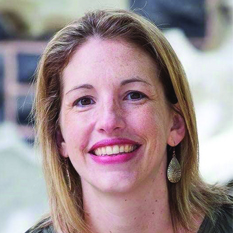
Dr. Carla Meledandri
View More

Dr. Carla Meledandri
University of Otago, New Zealand
Dr Carla Meledandri is a Lecturer in the Department of Chemistry at the University of Otago. Her research is focused on the design, synthesis and characterisation of functional nanoscale and nanocomposite materials, and the investigation of their efficacy for applications in the area of biomedicine; specifically, for improved medical diagnosis and targeted therapy, particularly dental therapy. In 2001 Carla received her B.S. degree in Chemistry from Penn State University. From 2002 – 2004, she worked as a Research Associate in the Department of Blood Research at the Walter Reed Army Institute of Research in Maryland, where her work involved the investigation of membrane lipid and protein interactions with novel cryo protecting agents. She then carried out her PhD study from 2004 – 2008 at Dublin City University, where her work involved the preparation and fast field-cycling NMR characterisation of membrane-bound nanoparticles and nanoparticle assemblies for biomedical applications. After completing a post-doctoral assignment (2008 – 2009) at the same University, where she worked on the development of hierarchical assemblies of hybrid magnetic nanoparticle clusters for applications in magnetic resonance imaging, Carla moved to New Zealand and began her current appointment at Otago in December 2009. Carla has been an Associate Investigator in the MacDiarmid Institute since 2010. Research Interests: Our research is directed toward the design, synthesis, and characterization of functional nanoscale materials. The interest in nanoscale materials lies in the fact that their size, shape, and composition can dramatically affect their physical and chemical properties. This phenomenon can be exploited in order to develop new materials with tunable properties for a broad range of applications. Our interests encompass both fundamental and applied aspects of nanomaterials research. Current projects are interdisciplinary, combining chemistry, materials science, physics, and biological sciences in order to develop new materials with potential application in biomedicine and for use as nanoswitches.
Title: Tuning metal-organic framework nanocrystals using microemulsions
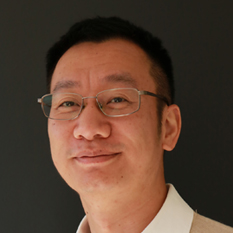
Dr. Chuyang TANG
View More

Dr. Chuyang TANG
The University of Hong Kong, Hong Kong
Professor Tang’s research focuses on membrane separation technology, environmental materials, and water-energy nexus. He received his B.Eng. (2000) and M.Eng. (2001) degrees from Nanyang Technological University and his Ph.D. degree (2007) from Stanford University. He is a Professor of Environmental Engineering at the University of Hong Kong. Professor Tang’s invention on aquaporin-based biomimetic membranes has resulted in the successful commercialization of Aquaporin Inside Membranes (AIMs®). He is an Editorial/Advisory Board Member of Environmental Science & Technology Letters, Journal of Membrane Science, Desalination, and Environmental Research. He has over 260 refereed publications, with a total citation of >22,000 and H-index of 83 (Google Scholar). He is a recipient of the RGC Senior Research Fellow Award, the Singapore Ministry of National Development R&D Merit Award, the Finland Distinguished Professor Program Fellowship, and the International Desalination Association Fellowship.
Title: Nano-enhanced membranes for clean water
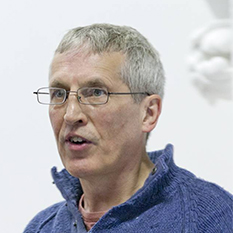
Dr. David Jenkins
View More

Dr. David Jenkins
Plymouth University, UK
Dr. David Jenkins has completed, B.Sc. Physics, M.Sc. Laser Physics, Ph.D. Applied Physics and post doctoral fellowship from Manchester University. He has Professional membership on Institute of Physics, MInst p., C.Phys.Institute of Engineering and Technology M.IET Research interests Micro Sensor / Actuator Systems: Surface Plasmon Resonance and Nano toxicology, Functional materials and Micro-electro mechanical devices (MEMS), Graphene and Sensors and Active vibration control. Microscopy: Magnetic Force Microscopy (MFM), Electro Magnetic Force Microscopy (eMFM), Near-field optics, scanning laser microscopy. Medical Systems: Laser interactions with DNA and cells and Heart Rate Monitoring.
Title: Graphene based biosensors
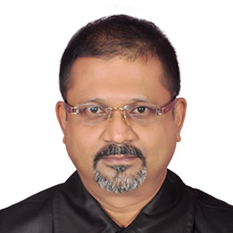
Dr. Debasish Sarkar
View More

Dr. Debasish Sarkar
NIT Rourkela, India
Prof. Debasish Sarkar, HoD, Dept of Ceramic Engg, and HoC, Centre for Nanomaterials, National Institute of Technology, Rourkela, Odisha, India, has 24 yrs of academic, research & industrial experience. He completed 8 Projects (Govt of India, Tata Refractories Ltd, Tata Steel Limited), guided 8 PhDs, published 70 international peer-reviewed journal papers, 3 Korean patents on Nanoparticles for functional (BaTiO3) and structural (ZrO2, TiC) applications. Prof. Sarkar published several book chapters with Pan Standford, Wiley-VCH, Springer, Elsevier, and books ‘Nanostructured Ceramics: Characterization and Analysis’ CRC Press, USA; ‘Ceramic Processing: Industrial Practices’ CRC Press, USA; ‘Introduction to Refractories for Iron and Steelmaking,’ Springer, Switzerland.
His prime research interest is the synthesis of controlled morphologies of nanoparticles for functional applications and the fabrication of nanostructured bulk ceramics for structural applications. Eventually, such research activity expedites different prototypes and patents of nanostructured Zirconia Toughened Alumina Hip prosthesis and Zirconia Dental Screw. Moreover, the patented graphene fortified MgO-C refractory attracted attention to increasing 180-ton ladle performance in Al-killed steel processing.
Title: Tailor-made Hip Prosthesis
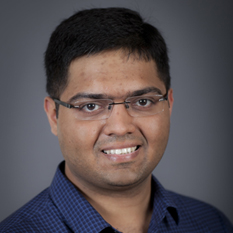
Dr. Deep Jariwala
View More

Dr. Deep Jariwala
University of Pennsylvania, USA
Deep Jariwala is an Assistant Professor in Department of Electrical and Systems Engineering at the University of Pennsylvania (Penn). His research interests broadly lie at the intersection of new materials, surface science and solid state devices for opto-electronics and energy harvesting applications. Deep completed his undergraduate degree in Metallurgical Engineering from the Indian Institute of Technology, BHU in 2010. As an undergraduate, Deep contributed to the early works on chemical vapor deposition (CVD) of graphene, boron nitride and their heterostructures at Rice University. Deep did his Ph.D. in Materials Science and Engineering at Northwestern University graduating in 2015. At Northwestern, Deep made contributions to the study of charge transport and electronic applications of two-dimensional (2D) semiconductors and pioneering the study of gate-tunable, mixed-dimensional, van der Waals heterostructures. Deep was a Resnick Prize Postdoctoral Fellow at Caltech from 2015-2017 working on nanophotonic devices and ultrathin solar cells before joining Penn in 2018 and starting his own group. Deep’s research has earned him awards of multiple professional societies including the Russell and Sigurd Varian Award of the American Vacuum Society, The Richard L. Greene Dissertation Award of the American Physical Society, Johannes and Julia Weertman Doctoral Fellowship, the Hilliard Award, the Army Research Office Young Investigator Program Award, Nanomaterials Young Investigator Award in addition to being named in Forbes Magazine list of 30 scientists under 30 and is an invitee to Frontiers of Engineering conference of the National Academy of Engineering. He serves on the Editorial board of the journals Electronics and Micromachines and on Early Career Editorial Advisory Board of Nano Letters. He has published over 80 journal papers with more than 10000 citations and 4 patents.
Title: Low-dimensional Heterostructures for Advanced Logic, Memory and Photonics
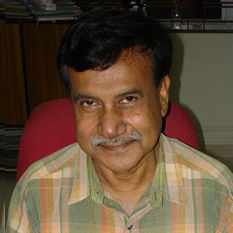
Dr. Dhirendra Bahaur
View More

Dr. Dhirendra Bahaur
IIT Goa, India
Prof. Dhirendra Bahaur is currently a Visiting Professor at Mechanical Engineering Department, IIT Goa. Earlier, he was the professor in the Department of Metallurgical Engineering and Materials Science, IIT Bombay. His research area is based on Nano structured materials, Magnetic materials, Nano-biotechnology, Magnetic materials at nano scale for bio medical and other applications, Photomagnetism, Magnetoresistive materials, Dilute magnetic semiconductors, Electronic ceramics, Novel synthetic methods including self-assembly and LBL techniques. He has more than 400 publications with citations of 12434, h-index of 58 and i10 index of 251. He is the recipient of many prestigious awards including Indian National Science Academy Scientist Award.
Title: Graphene derivatives and their composites: processing, properties and applications
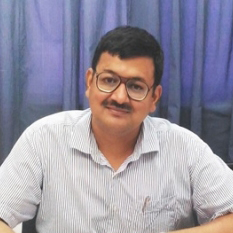
Dr. Dipankar Bandyopadhyay
View More

Dr. Dipankar Bandyopadhyay
IIT Guwahati, India
Dr. Dipankar Bandyopadhyay is a B.Sc in Chemistry and B.Tech in Chemical Engineering from Calcutta University. After completion of M.Tech from the Department of Chemical Engineering at IIT Kanpur, he served ANSYS - Fluent India Private Limited for more than 3 years as a CFD Engineer before completing PhD from IIT Kanpur. Presently, he is a Professor in the Department of Chemical Engineering and Head, Centre for Nanotechnology at IIT Guwahati. He has also served as visiting faculty at Yeungnam Univerisity at South Korea under the WCU Program, and KTH Sweden under the Erasmus Mundus program.
His research areas encompass Thin film Dynamics, Soft-matter Physics, Liquid Crystals and Smart Materials, Droplet and Digital Microfluidics, Health Care Point-of-Cater-Testing Devices, MEMS Theranostics, Microrheology, Clean energy, Harvesting, Computational Fluid Dynamics, Stability and Instability of Fluidic systems, Complex Fluids, Microrheology, among others.
He has authored ~115 research publications in the international journals and has filed 20 Indian and 7 international patents so far. He is also one of the PIs of the Upcoming “Centre for Excellence on the Research and Development of Nanoelectronic Theranostic Devices” at IIT Guwahati. He is the recipient of CV Seshadri Distinguished Lecture Award 2020, NCL’s Prof. K Venkataraman CHEMCON Award in CHEMCON 2016. He and his group at the Indian Institute of Technology Guwahati is the recipients of Gandhian Young Technology award 2016 and 2019, BIRAC-SRISTI Appreciation Award 2017. He is a nominated member of American Chemical Society, Royal Society of Chemistry, and Indian Institute of Chemical Engineers.
Title: Microdroplets and Microchannels for Unit Operations
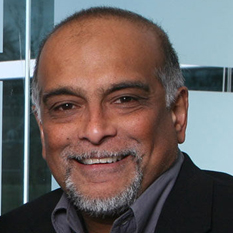
Dr. Gehan Amaratunga
View More

Dr. Gehan Amaratunga
University of Cambridge, UK
Gehan A. J. Amaratunga received the B.Sc. degree (summa cum laude) in electronic engineering from Cardiff University, Cardiff, U.K., in 1979, and the Ph.D. degree from the University of Cambridge, Cambridge, U.K., in 1983.,He has held academic and research positions with Southampton University, Southampton, U.K., the University of Cambridge, the University of Liverpool, Liverpool, U.K., and Stanford University, Stanford, CA, USA. Since 1998, he has been the 1966 Chair Professor of Engineering with the University of Cambridge and a fellow of Churchill College, Cambridge. He was a Visiting Professor with Nanyang Technological University, Singapore, from 2009 to 2018, a Tan Chin Tuan Visiting Professor from 2012 to 2014, and the Chief of Research and Innovation with the Sri Lanka Institute of Nanotechnology (SLINTEC), Homagama, Sri Lanka, from 2011 to 2019. He is currently an Honorary Visiting Professor with Peking University Shenzhen Graduate School, Shenzhen, China, and Yunnan University, Kunming, China. His research is in the broad area of materials and technologies for electrical energy and power, including electrical and electronic engineering with chemistry, physics, materials science, and information systems.,Dr. Amaratunga is a fellow of the Royal Academy of Engineering, U.K., and the Royal Society of Arts, U.K., and the Institution of Engineering and Technology. He was a recipient of the Royal Academy of Engineering Silver Medal for the successful commercialization of advanced research in 2007.(Based on document published on 17 September 2020).
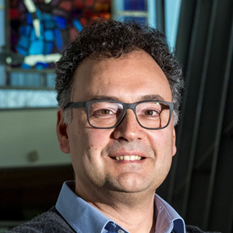
Dr. George Malliaras
View More

Dr. George Malliaras
University of Cambridge, UK
Deputy Editor, Science Advances
George Malliaras is the Prince Philip Professor of Technology at the University of Cambridge. He received a PhD from the University of Groningen, the Netherlands and did a postdoc at the IBM Almaden Research Center, USA. Before joining Cambridge, he was a faculty member at Cornell University in the USA, where he also served as the Director of the Cornell NanoScale Facility, and at the School of Mines in France. His research has been recognized with awards from the New York Academy of Sciences, the US National Science Foundation, and DuPont, and an Honorary Doctorate from the University of Linköping in Sweden. He is a Fellow of the Materials Research Society and of the Royal Society of Chemistry and serves as Deputy Editor of Science Advances.
Title: Electronics on the Brain
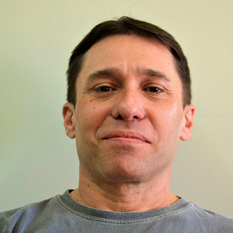
Dr. Gilberto Maia
View More

Dr. Gilberto Maia
UFMS, Brazil
Gilberto Maia is a Full Professor at Universidade Federal de Mato Grosso do Sul – Brazil - Institute of Chemistry and has been conducting research particularly on nanostructured metal electrocatalysts (supported on carbon-based materials or otherwise) for use in the oxygen reduction reaction (ORR), yielding water or hydrogen peroxide, hydrogen evolution reaction (HER), and oxygen evolution reaction (OER); synthesis of graphene and graphene oxides, including their application to ORR; inorganic complexes applied to HER; enzymatic bioelectrocatalysts; and density functional theory for metallic surfaces (supported on carbon-based materials or otherwise) to be used in electrocatalysis.
Title: Electrocatalysts applied toward hydrogen peroxide production
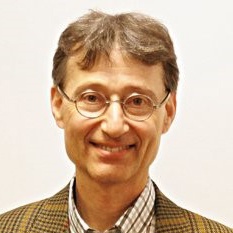
Dr. Harry E. Ruda
View More

Dr. Harry E. Ruda
University of Toronto, Canada
Editor-in Chief, IET Circuits, Devices & Systems
Harry Ruda is the Stanley Meek Chair Professor in Nanotechnology at the University of Toronto, and Director of the Centre for Advanced Nanotechnology - Canada’s first centre for nanotechnology. After obtaining his BSc from Imperial College in 1979, he joined MIT, and from 1979 to 1982 he worked on the optical and transport properties of II-VI based infrared detector materials and obtained his PhD in 1982. Between 1982 and 1984 he developed one of the first theories for electron transport in selectively doped two dimensional electron gas heterostructures while working as an IBM postdoctoral fellow, and in 1984 he joined 3M Corporation as a senior scientist developing some of the first models for electronic transport and optical properties of wide bandgap II-VI semiconductors, while being a key member of the blue laser team. In 1989 he joined the University of Toronto, rising through the ranks to his current Full Professor appointment.
Professor Ruda has published over 290 publications in international refereed journals (with over 7,726 citations; h=43), has co-authored 4 books and has 14 patents. Professor Ruda’s research interests focus on optoelectronic nanostructures with application in areas such as biosensing and information technology.
Harry Ruda serves on the National Science and Engineering Council of Canada and on other government panels including those of the DOE, EPA and NSF in the US, and the RAE and EPSRC in the UK. He serves on the international advisory board of the National University of Science and Technology in Moscow, and as a board member of Canadian Solar Inc (CSIQ:NASDAQ). He has also served on the editorial boards of: Journal of Applied Physics, Applied Physics Letters, Journal of Nanoscience and Nanotechnology, Journal of Materials Science: Materials in Electronics, Nanotechnology Research Letters, and Nano-Micro Letters and is currently Chief Editor of IET-CDS. He is a Fellow of the Royal Society of Canada, Fellow of Institute of Physics, Fellow of the Institute of Nanotechnology, Fellow of the Institution of Engineering and Technology, and Fellow of the Canadian Academy of Engineering.
Title: Prospects for Nanowire Optoelectronics and Sensing
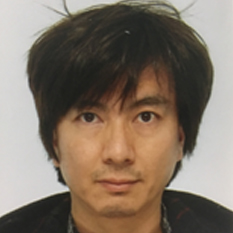
Dr. Hiroshi Watanabe
View More

Dr. Hiroshi Watanabe
National Yang Ming Chiao Tung University, Taiwan
Hiroshi Watanabe received Ph.D. degrees from the University of Tsukuba, Japan, in theoretical physics in Mar. 1994. He joined the Corporate R & D Center, Toshiba Corporation from April 1994 to Jan. 2010. His current position is a full professor, Dept of Electrical and Computer Engineering (ECE) in National Yang Ming Chiao Tung University, Taiwan, since February 2010. He has studied a wide range of science and technologies from quantum physics, semiconductor devices technologies, semiconductor memories , semiconductor nanostructures, electronic virus sensing, blockchained IoT, and so forth. He has 155 granted patents all over the world (including 67 US granted ones) in the wide areas. He has been a conference advisory board member of Flash Memory Summit and IEEE Technical Committee on Quantum Communications and Information Technologies (IEEE QCIT) since 2018. He has served as Fellow Technical Committee at Foremay, Inc., U.S.A since 2019. He has been a Senior Member of the IEEE since 2012.
Title: A concept of electronic sensing of virus
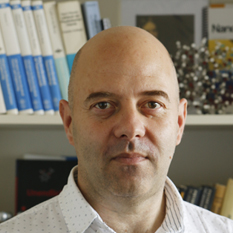
Dr. Ilia Valov
View More

Dr. Ilia Valov
Forschungszentrum Jülich, Germany
Dr.rer.nat Ilia Valov is Head of Group Nanoelectrochemistry at the Research Centre Juelich in Germany and is teaching at the RWTH-Aachen University. He received his M.Sc. degree in materials’ electrochemistry in Sofia, and Ph.D. in physical chemistry of solids / solid state electrochemistry in Giessen, Germany. His research interests and activities are concentrated on electrochemical and, in general, physicochemical phenomena at the nano and sub-nanoscale, such as mass and charge transport, electric double layer, point defects, surfaces and interfaces with a focus on resistive switching memories, memristive and neuromorphic devices, energy conversion and electro- catalysis (water splitting). A special focus is set on the relation between materials chemistry, structure and properties, materials design and particular applications and functionalities. He published over 140 original research papers, edited 2 books, 6 book chapters and holds 6 patents. The results of his group are frequently reported also in magazines, news papers and social media. Ilia Valov is Editor for Scientific Reports (NPG) and Materials (MDPI), and has guest edited special issues for RSC, Wiley and Elsevier journals on topics such as nanoscale electrochemistry, memristive devices and neuromorphic functionalities. He chairs the 2018 Faraday Discussion Meeting on New memory paradigms: memristive phenomena and neuromorphic applications and is co-initiator and co-organizer of the International Conference on Memristive Materials, Devices & Systems (MEMRISYS) which is the largest and most important annual conference on memristive theory and applications.
Title: Materials and nanoionic processes for controlled memristive and neuromorphic functionalities
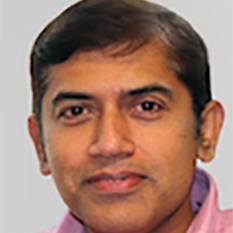
Dr. Jayan Thomas
View More

Dr. Jayan Thomas
University of Central Florida, USA
Dr. Jayan Thomas, works as Associate Professor in University of Central Florida, USA. He completed his Postdoctoral fellowship in International School of Photonics, India. He served as Research Scientist, College of Optical Sciences, The University of Arizona during 2001-2005. Research in Dr. Jayan Thomas group is focused on developing nanoarchitectured energy conversion and storage devices. Recently, their group have developed a nanoarchitecturing technique using which polymer nanostructures can be printed efficiently at low cost. This technique is utilized to develop nanostructured polymer solar cells, nanoarchitectured electrodes for Li-ion batteries and supercapacitors, and printed biomolecule based photonic devices. Their nanoimprinting technique offers a simple route to fabricate large area nanostructures in a very short time. Another line of work is the development of photorefractive polymers with improved sensitivity. Photorefractive composites derived from conducting polymers offer the advantage of dynamically recorded holograms without the need of processing of any kind. Thus, they are the material of choice for many cutting edge applications, such as updatable three-dimensional (3D) displays and 3D telepresence. Further improvements in the polymer composites could bring applications in telemedicine, advertising, updatable 3D maps and entertainment. We are also working on the development of new photorefractive polymers sensitive at IR wavelengths. The group is also studying the optical limiting properties of core-shell plasmonic nanostructures. He won several prestigious awards, honors and societites such as Reach for the stars Award in 2016, R&D100 Award in 2015 and NSF CAREER award in 2014.
Title: Design principles of asymmetric supercapacitor
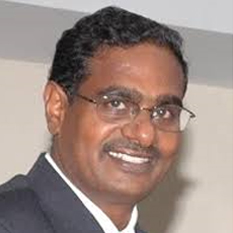
Dr. R. Jayavel
View More

Dr. R. Jayavel
Anna University, India
Dr. R. Jayavel, Coordinator, Centre for Nanoscience & Technology and Professor, Crystal Growth Centre, Anna University is having 28 years of research experience in Materials Science, Crystal Growth & Nanotechnology. He has rich experience in the synthesis of Nano and crystalline materials. He has published about 400 research papers in International peer reviewed journals and presented more 500 research papers in International/National conferences. Dr. Jayavel is an internationally acclaimed researcher with h-index of 42, i-10 index of 179 and more than 6800 citations. Prof. Jayavel has travelled widely to several countries such as U.S.A, U.K., Germany, France, Italy, Norway, Sweden, Belgium, Netherlands, Greece, Japan, Australia, New Zealand, Singapore, South Korea, China, U.A.E., Kenya and Saudi Arabia for collaborative research. Prof. Jayavel was a Visiting Professor at the Research Institute of Electronics, Shizuoka University, Japan (2007), University of Gottingen, Germany (2010), University of Queensland, Australia (2012) and University of South Australia (2016). So far 39 researchers have obtained their Ph.D. Degree under the guidance of Dr. Jayavel and currently 11 students are working for Ph.D. He has investigated several research projects worth Rs.12.00 crore funded by various organizations like DST, UGC, AICTE, DRDO, CSIR and DAE-BRNS. He has also edited the conference proceedings on “Advanced Materials for Optoelectronics”. He is the Chief-Editor of Journal of Applied Engineering and Sciences published by Anna University. Prof. Jayavel is a recipient of several awards and recognition. To name a few, Fellow of Academy of Sciences, Chennai, MRSI Medal-2019 by the Materials Research Society of India, LEAP (Leadership for Academicians Programme) Fellowship-2019 by MHRD, Govt. of India, Tamil Nadu Scientist Award (2016), Active Researcher Award-Anna University (2012),Science and Technology Agency (STA) Fellowship, Japan (1999-2001), DAAD Sandwich Fellowship-Germany (2000), Japanese Fellowship for Foreign Expert (2004). Dr. Jayavel has received best presentation awards at many conferences, including the MRSI Prize for best paper presentation. He has been the member of several academic and professional bodies, like Board of Studies, Academic Council, Research Advisory Council and Governing Council for many Institutions. He is also a Member of UNESCO Chair in Materials for Energy Conversion, Saving and Storage. Dr. Jayavel has served as the Director-Research (2015-2018) and Director, Centre for Nanoscience and Technology, Anna University for about 10 years (2005-2015). He had also served as Director-in-charge of Centre for International Affairs, Anna University (2005-2008).
Title: Two Dimensional Nanostructures for Electrochemical and Bio Sensor Applications
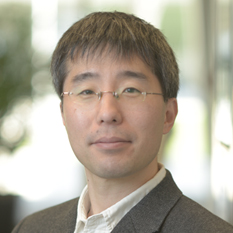
Dr. Jeon Woong Kang
View More

Dr. Jeon Woong Kang
Massachusetts Institute of Technology, USA
Jeon Woong Kang is a research scientist at MIT Laser Biomedical Research Center. After receiving PhD from POSTECH (South Korea), he joined Wellman Center for Photomedicine (MGH) as a research fellow. In MGH, he developed a two-photon fluorescence imaging system based on wavelength-swept laser source.
After two years at MGH, he moved to MIT Laser Biomedical Research Center at 2009. Since then, he has been working on biomedical spectroscopy projects including spectroscopic cancer diagnosis, noninvasive glucose monitoring, intra-needle optical sensor and so on. He is also interested in commercialization and co-founded a medical device startup Medisight.
Title: Noninvasive glucose monitoring using NIR Raman spectroscopy
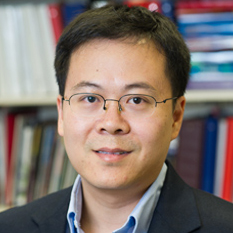
Dr. Jiaxing Huang
View More

Dr. Jiaxing Huang
Northwestern University, USA
Editor-in-Chief of Accounts of Materials Research
Jiaxing Huang is a Professor of Materials Science and Engineering at Northwestern University. He received his B.S. degree in Chemical Physics from Univeristy of Science and technology of China, Ph.D. in Chemistry from Univeristy of California, Los Angeles, and became a Miller Fellow at UC Berkeley before joining Northwestern in 2007. Prof. Huang enjoys integrating education and research to enhance learning experience for his students and himself. In research, his group uses chemical principles and tools to discover new materials, advance materials processing, and they aim to make materials innovations for better living. Some recent examples include carbon based nanomaterials, bulk nanostructure materials, and new forms of colloidal materials for energy storage, water treatments, safer personal care and materials-based solutions to enhance public health response to infectious respiratory diseases. Through teaching, they aim to develop intuition, inspire creativity and bring the best out of students and themselves. His work has been recognized by awards from the National Science Foundation, the Sloan Foundation, the Society of Manufacturing Engineers, the American Vacuum Society, and the International Aerosol Research Assembly. He has been named a Highly Cited Researcher since 2014, and a recipient of the Guggenheim Fellowship, the JSPS Fellowship from Japan, and the Humboldt Research Award from Germany. He is also a Fellow of the American Association for the Advancement of Science (AAAS) and the founding Editor-in-Chief of Accounts of Materials Research.
Title: Soft Carbon Sheets: Some New Insights into an Old Material
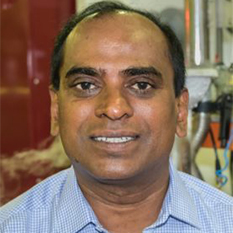
Dr. John V. Kennedy
View More

Dr. John V. Kennedy
GNS Science, New Zealand
Dr. John V. Kennedy is a Principal Scientist, Team Leader, Ion Beam Physics and Nanotechnology at National Isotope Centre, GNS Science. Dr. Kennedy is a materials scientist focussed on condensed matter research and nuclear instrumentation and has pursued wide range of research projects related to application of ion implantation and ion beam analysis technique for characterising thin films, nanotechnology, advanced materials, biology, environmental and agricultural samples. He is currently investigating metal and metal oxide nanoparticle growth and their structural, electrical, optical and magnetic properties, metallic nanoclusters and multiferroics nanostructures. He has published more than 200 journal papers demonstrating ion implantation into polymers, semiconductors, superconductors, nanostructures and 20 international patent applications. John’ interest in applying his materials science to industrial projects has led him to be leader in the Product Accelerator, Inductive Power Transfer and Titanium Technologies of New Zealand.
Title: Strain engineering for next generation communication devices
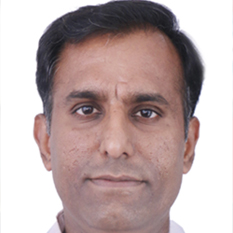
Dr. Kamalakannan Kailasam
View More

Dr. Kamalakannan Kailasam
INST Mohali, India
Name: Prof. Kamalakannan Kailasam
Designation: Scientist-F
Institute/Organisation: Institute of Nano Science and Technology (INST), Mohali, Punjab, India
Topic/Theme: Energy and Environment
Material Chemist
Research Career
♦ M.Sc. (2002): Bharathidasan University, Tiruchirappalli, India
♦ Ph.D. (2008): University of Stuttgart, Germany
♦ Postdoctoral Research Fellow (Prof. Dr. Arne Thomas) in Technical University of Berlin (2010 – 2015) & Max Planck Institute of Colloids and Interfaces, Potsdam, Germany (2009 –2010)
♦ Scientist-E/ Associate Professor, INST Mohali, India (April 2015-December 2019) ♦ Currently Scientist-F/ Professor, INST Mohali, India from January 2020 onwards
Research InterestAdvanced Functional Nanomaterials for Energy and Environmental Applications like photocatalytic (water splitting, CO2 reduction & biomass conversion), gas storage, sensing and cancer therapeutics using porous Heptazine based carbon nitrides, COFs, CMPs and Metal oxides/ chalcogenides.
Awards and Recognitions ♦ Emerging Investigator in Materials Chemistry, “Journal of Materials Chemistry A Emerging Investigators, 2018” by RSC, UK ♦ Max Planck Fellow – 2009
Publications in Journals 60 peer-reviewed papers
Details of current projects5 projects as Principal Investigator in SERB-ECR, DST-CERI, DST Nano Mission & Tata Steel. Technology development/Initiation ♦ “Prototype Large-Scale Reactor for Simultaneous Production of H2 and Fine Chemicals under Natural Sunlight”, a Technology project under DST-Nano Mission-NATDP scheme. ♦ “Nanoporous Carbon Nitride based Organic Polymers for CO2 Activation and Conversion to Organic Carbonates”, TATA STEEL R&D.
Title: Artificial Photosynthesis: Porous Organic Polymers for simultaneous H2 generation and Biomass conversion
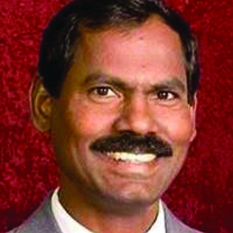
Dr. Kannan A M
View More

Dr. Kannan A M
Arizona State University, USA
Associate Editor- International journal of Hydrogen Energy
A.M. Kannan is a Professor in the Polytechnic School of the Ira A. Fulton Schools of Engineering at Arizona State University, USA, specializing in low temperature fuel cells, solar cells, and large-scale energy storage in batteries. He was Visiting Professor at Tampere University of Technology, Finland, Principal Scientist at the VTT Technical Research Center of Finland, and Distinguished Visiting Professor at Yuan Ze University, Taiwan and a “Distinguished Chair” awardee through Fulbright Fellowship at the Aalto University, Finland. He possesses strong academic and professional experience, having also worked as Chief Scientist at Hoku Scientific Inc., Hawaii. Dr. Kannan has published extensively and presents regularly at international conferences on batteries and fuel cells. He serves as an Associate Editor of the International Journal of Hydrogen Energy, as well as on other editorial boards. He earned his M.S. in Chemistry from Madurai Kamaraj University, India, in 1985, and completed his Ph.D. in 1990 at the Indian Institute of Science, India.
Title: Enhancing interfacial charge transfer in WO3/BiVO4 photoanode heterojunction for photoelectrochemical water splitting
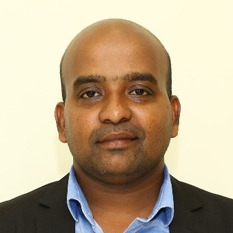
Dr. Kasinathan Kaviyarasu
View More

Dr. Kasinathan Kaviyarasu
University of South Africa, South Africa
I am a material scientist currently working as a Senior Researcher at University of South Africa (UNISA) under UNESCO Africa Chair in Nanosciences/Nanotechnology award. My contribution in the field of functional materials for energy, bio-catalysis and supercapacitor applications have generated new knowledge and delivered 185 peer reviewed publications and 40 oral/invited presentations at the international conferences. I have also published 02 textbooks, 07 book chapters and filled 3 provisional patent applications. My research excellence is evident through my strong publication record as per Google Scholar profile with H-index of 53; i10-index 122 and total citation 7623 as on February 2021. My research is directed primarily towards the design and development of advanced materials for low carbon emission technologies which plays a key role to mitigate climate change. My goal is to understand how to design and control the nanoscale organization of macromolecular nanomaterials and their nanocomposites to achieve improved structure, properties, and functionality.
In 2020 Standford University named me as one of top 2% scientists from South Africa. In addition, Clarivate Web of Science have been identified me for the Highly Cited Researchers 2020 list
Title: Molecular Nanoscience, Catalysis and Applications
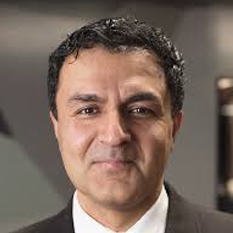
Dr. Kourosh Kalantar-Zadeh
View More

Dr. Kourosh Kalantar-Zadeh
University of New South Wales (UNSW), Australia
Kourosh Kalantar-Zadeh is a professor of Chemical Engineering at the university of New South Wales (UNSW), Australia, and one of the Australian Research Council Laureate Fellows of 2018. Prof. Kalantar-Zadeh is involved in research in the fields of materials sciences, electronics and sensors, has co-authored of ~450 scientific papers and is also a member of the editorial boards of journals including ACS Sensors, ACS Applied Nano Materials, Advanced Materials Technologies, Nanoscale and ACS Nano. He has received many international awards including the 2017 Institute of Electrical and Electronics Engineers (IEEE) Sensor Council Achievement, 2018 American Chemical Society (ACS) Advances in Measurement Science Lectureship awards and 2020 Robert Boyle Prize of Royal Society of Chemistry (RSC). He also appeared in the Clarivate Analytics most highly cited list since 2018.
Title: Liquid metals: neglected reaction media for synthesizing functional materials
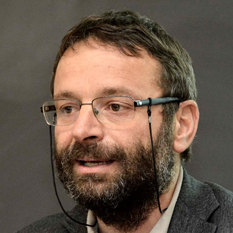
Dr. Lorenzo Pavesi
View More

Dr. Lorenzo Pavesi
University of Trento, Italy
Lorenzo Pavesi is Professor of Experimental Physics at the Department of Physics of the University of Trento (Italy). Born the 21st of November 1961, he received his PhD in Physics in 1990 at the Ecole Polytechnique Federale of Lausanne (Switzerland). In 1990 he became Assistant Professor, an Associate Professor in 1999 and Full Professor in 2002 at the University of Trento. He leads the Nanoscience Laboratory (25 people), teaches several classes at the Department of Physics of the University of Trento. He founded the research activity in semiconductor optoelectronics at the University of Trento and started several laboratories of photonics, growth and advanced treatment of materials. He was the first president and founder of the IEEE italian chapter on Nanotechnology. He has directed 37 PhD students and more than 30 Master thesis students. His research activity concerned the optical properties of semiconductors. During the last years, he concentrated on Silicon based photonics where he looks for the convergence between photonics and electronics. He is interested in active photonics devices which can be integrated in silicon by using optical nolinearities and modified material properties. His interests encompass also optical sensors or biosensors and solar cells. Recent development is toward integrated quantum photonics and neuromorphic photonics. In silicon photonics, he is one of the worldwide recognized experts, he organized several international conferences, workshops and schools and is a frequently invited speaker. He manages several research projects, both national and international. He is an ERC grantee. He is a frequently invited reviewer, monitor or referee for photonics projects by several grant agencies. He is an author or co-author of more than 500 papers, author of several reviews, editor of more than 15 books, author of 2 books and holds 9 patents. He is chief speciality editor of the section Optics and Photonics of Frontiers in Physics and founding editor of the series Photonic Materials and Applications, a joint initiative of SPIE and Elsevier. Moreover he sits in the editorial board of the ETRI Journal and of the journals Sensors and Applied Sciences: Optics and Lasers. He is in the advisory board of Glass-to-Power and of Sybilla, two italian start-up. In 2001 he was awarded the title of Cavaliere by the Italian President for scientific merit. In 2010 and 2011 he was elected distinguished speaker of the IEEE- Photonics society. He is fellow of the IEEE, of SPIE and of the SIF. He holds an H-number of 59 according to Scopus and Web of Science, and of 72 according to Google Scholar. Webpages: University personal web page https://webapps.unitn.it/du/en/Persona/PER0003263/Curriculum Nanoscience Laboratory http://nanolab.physics.unitn.it/ ORCID http://orcid.org/0000-0001-7316-6034 Web of Science ResearcherID: F-2631-2011 Google scholar https://scholar.google.it/citations?user=5WnxJ4cAAAAJ&hl=it Scopus http://www.scopus.com/authid/detail.url?authorId=7006812149 Publons: https://publons.com/researcher/1732462/lorenzo-pavesi/ Linkedin http://it.linkedin.com/pub/lorenzo-pavesi/14/38/43b/en
Title: The past, the present and the future of silicon photonics: a personal view point
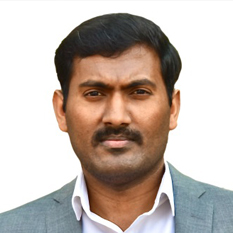
Dr. Madasamy Thangamuthu
View More

Dr. Madasamy Thangamuthu
University College London (UCL), UK
Dr. Madasamy Thangamuthu currently working as a senior postdoc in Prof. Junwang Tang group at the Department of Chemical Engineering, University College London (UCL) since September 2019. Earlier, he finished Ph.D at VHNSN College, Madurai Kamaraj University, Madurai, in August 2014. Then, he moved to Swiss Federal Institute of Technology Lausanne (EPFL), Switzerland for his postdoc studies through a prestigious Swiss Government Excellence scholarship. He secured an own project funding from Gebert Ruef Stiftung, Switzerland for plasmonic nitrogen splitting research. His research interests primarily focus on solar fuel synthesis. Photocatalytic and photoelectrochemical production of hydrogen fuel and ammonia synthesis using earth abundant water as feedstock and sustainable solar energy in a nature inspired Z-scheme system. Solar-driven methanol fuel production by processing CO2 waste. He is an expert in plasmonic heterogeneous photocatalysis - Preparation and characterization of large area plasmonic nanostructures (gold, silver, aluminium/semiconductor modified photoelectrodes for sustainable solar to chemical energy conversion. His expertise also includes development of electrochemical and surface plasmon resonance based biosensors and immunosensors for the measurement of clinically important biomarkers using enzymes and their mimetics functionalized nanomaterials integrated electrodes. To his credit, he has two Indian patents, written 3 book chapters, and more than 20 international peer-reviewed publications.
Title: Solar fuel synthesis for sustainable future
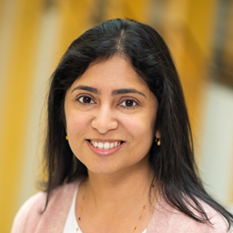
Dr. Madhu Bhaskaran
View More

Dr. Madhu Bhaskaran
RMIT University, Australia
Professor Madhu Bhaskaran co-leads the Functional Materials and Microsystems Research Group at RMIT University. She has won numerous awards and fellowships for her research including 2017 Eureka Prize for Outstanding Early Career Researcher, and medals from Australian Academy of Science and Australian Academy of Technology and Engineering. The discoveries made at micro/nano-scales by the research group are transformed into prototypes often in partnership with industry. Her work seeks to transform conventional hard electronics into soft and unbreakable products, thin enough to create electronic skin.
Title: Oxide based conformal sensors for healthcare applications
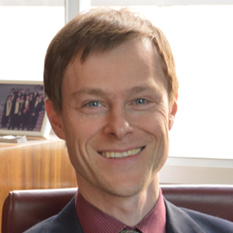
Dr. Marc-Olivier Coppens
View More

Dr. Marc-Olivier Coppens
University College London, UK
Marc-Olivier COPPENS is Ramsay Memorial Professor in Chemical Engineering at UCL, since 2012. Having been Head of Department for almost 8 years, he is now the first Vice-Dean for Interdisciplinarity at the Faculty for Engineering Sciences. Prior to UCL, he was Professor at Rensselaer (USA) and TU Delft (Netherlands). He founded and directs the UCL Centre for Nature-Inspired Engineering, which was granted EPSRC “Frontier Engineering” (2013) and “Progression” (2019) Awards. He is most recognized for pioneering nature-inspired chemical engineering (NICE): learning from fundamental mechanisms underpinning desirable traits in nature to develop innovative solutions to engineering challenges. A Fellow of AIChE and IChemE, Corresponding Member of the Saxon Academy of Sciences (Germany), and Qiushi Professor at Zhejiang University, he has published >150 journal articles and delivered >50 named lectures, plenaries and keynotes. He received the AIChE PSRI Lectureship Award in Fluidization (2017), and School of Engineering Education Awards at Rensselaer (2012) and UCL (2020).
Title: A systematic, scalable, nature-inspired design methodology for functional nanomaterials

Dr. Mark M. Banaszak Holl
View More

Dr. Mark M. Banaszak Holl
Monash University, Australia
Dr. Banaszak Holl is Professor and Head of the Department of Chemical Engineering, Faculty of Engineering, Monash University, Australia. He received his BS (1986) from the University of Chicago and PhD (1991) from Cornell University. He was a post-doctoral associate at the IBM TJ Watson Research laboratory (1992). He was an assistant professor at Brown University (1992-1995) prior to joining the University of Michigan (1995-2017) were he was Professor of Chemistry, Biomedical Engineering, and Macromolecular Science and Engineering. He served as Assoc. Vice-President for Research from 2009-2012 and Director of Macromolecular Science and Engineering from 2015-2017. His research interests focus on synthetic (polymer) and natural (bone, ligament, protein) materials, including as a function of their behavior in dynamic biological processes. Research projects include work in polymer synthesis, characterization, depolymerisation, and environmental impacts and remediation; gene and drug delivery; development of crisis, point-of-trauma diagnostics; bone and ligament structure as a function of disease and drug treatment (osteoporosis, osteogenesis imperfecta, anterior cruciate ligament failure).
Title: Robust, Engineered Nanotechnology Solutions – From Detecting SARS-CoV-2 to Waste Water Treatment
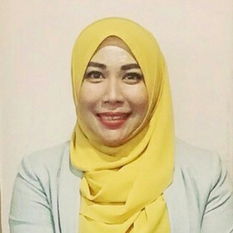
Dr. Marlia Mohd Hanafiah
View More

Dr. Marlia Mohd Hanafiah
University of Kebangsaan, Malaysia
Marlia Mohd Hanafiah is an Associate Professor at the Faculty of Science and Technology, Universiti Kebangsaan Malaysia (UKM). She is also a Head of Centre for Climate Change System, Institute of Climate Change, UKM. She received her Ph.D Degree in Life Cycle Assessment (LCA) from Radboud University Nijmegen, the Netherlands in 2013. She has served as a Guest Editor of several international journals and an Editor-in-Chief of Environment and Ecosystem Science (EES). She has supervised/co-supervised 50 masters and 18 bachelors theses and currently she supervises 22 PhD’s and 10 masters theses in the areas of LCA, wastewater treatment, green technology and sustainability. She is the coordinator of several postgraduate courses at her department. Her research projects focus on modelling potential environmental impacts from pollutant emissions in an LCA context and exploring potential bio-based and nanomaterials for treating wastewater towards sustainable water management practice. Dr. Marlia has published over 60 peer- reviewed papers, books, books chapters, technical reports and serves as peer reviewer for several high impact journals. As a project leader, she has received several international and national grants from various funding agencies with a total amount of more that RM 1.7 million. Since 2013, she has been involved in consulting and reviewing Criteria Document and Standard for companies, organizations and governments. She is currently conducting transdisciplinary research with a strong interest that integrates green technology and education to tackle fundamental community challenges, especially those related to sustainability.
Title: Cradle-to-Cradle: Recovery of Nanomaterials from E-Waste for Sustainable Management
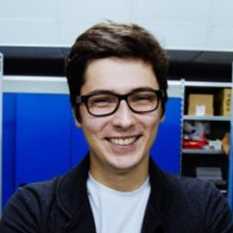
Dr. Maxim Shcherbakov
View More

Dr. Maxim Shcherbakov
Cornell University, USA
Title: Spatiotemporal metasurfaces: from photon acceleration to dynamic imaging
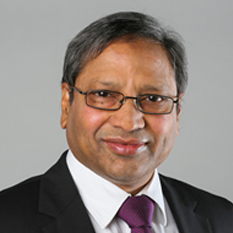
Dr. Mohammad Khaja Nazeeruddin
View More

Dr. Mohammad Khaja Nazeeruddin
EPFL, Switzerland
Prof. Mohammad K. Nazeeruddin received M.Sc. and Ph. D. in inorganic chemistry from Osmania University, Hyderabad, India. His current research at EPFL focuses on Dye-Sensitized Solar Cells, Perovskite Solar Cells, CO2 reduction, Hydrogen production, and Light-emitting diodes. He has published more than 725 peer-reviewed papers, ten book chapters, and he is the inventor/co-inventor of over 90 patents. The high impact of his work has been recognized by invitations to speak at over 250 international conferences, including the MRS Fall and Spring Meetings and GORDON conference. He has been nominated to the OLLA International Scientific Advisory Board. He appeared in the ISI listing of most cited chemists and has more than 105'000 citations with an h-index of 145. He teaches the "Functional Materials" course at EPFL and Korea University; directing, and managing several industrial, national, and European Union projects. He was awarded EPFL Excellence prize in 1998 and 2006, the Brazilian FAPESP Fellowship in 1999, the Japanese Government Science & Technology Agency Fellowship in 1998, Government of India National Fellowship in 1987-1988. He has been appointed as World Class University (WCU) professor by the Korea University, Jochiwon, Korea (http://dses.korea.ac.kr/eng/sub01_06_2.htm) and Adjunct Professor by the King Abdulaziz University, Jeddah, Saudi Arabia. Elected to the European Academy of Sciences (EURASC), and Fellow of The Royal Society of Chemistry. According to the Web of Science in 2016, Nazeeruddin is the 5th most cited chemist in the world and is one of the 19 scientists identified by Thomson Reuters as the World's Most Influential Scientific Minds in 2015 (from all scientific domains). He has been named Thomson Reuters "Highly Cited Researcher" from 2014 to 2020 and has been identified by the Times of Higher Education as "the top 10 researchers in the world working on the high impact perovskite materials and devices". (https://www.timeshighereducation.com/data-bites/top-universities-and-researchers-perovskite-solar-cell-research#survey-answer). http://gmf.epfl.ch/
Title: Perovskite Solar Cells: A New Paradigm in the Energy Sector
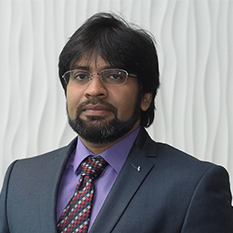
Dr. Mohammad Khalid
View More

Dr. Mohammad Khalid
Sunway University, Malaysia
DDr. Mohammad Khalid is a research professor and head of Graphene and Advanced 2D Materials Research Group at Sunway University, Malaysia. He has completed his bachelor’s degree in Chemical Engineering from Visvesvaraya Technological University, India and MSc in Chemical and Environmental Engineering from University Putra Malaysia. Later, he did his PhD in Nanotechnology Engineering from International Islamic University, Malaysia. His research focuses on nanomaterial synthesis, heat transfer fluids, phase change materials, energy harvesting and storage. More specifically, he is currently working on solar energy harvesting using deep eutectic salts (DES) and carbon nanoparticles based nanolubricants to improve engine performance. He has published more than 200 papers in international journals and refereed international conferences, edited three book titles and published several book chapters. He has 2 granted patents and holds several local and international grants. Professor Khalid has 15 years of research and teaching experience and he has supervised more than 30 postgraduate students. He is also a Fellow of the Higher Education Academy (FHEA), UK.
Title: Microwave synthesised hybrid MOS2/h-BN additive for ultralow friction nanolubricants
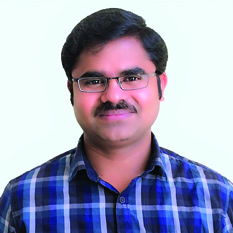
Dr. Murali Banavoth
View More

Dr. Murali Banavoth
University of Hyderabad, India
Dr. Murali Banavoth is currently an Assistant Professor at School of Chemistry, University of Hyderabad. After obtaining his Ph.D., from Indian Institute of Science, moved to King Abdullah University of Science and Technology (KAUST) at Solar Center as a postdoctoral associate and carried out pioneering work in the field of hybrid functional materials for solar harvesting. Dr. Banavoth’s contribution to the photovoltaic (Solar Cells) research is evident from his outstanding more than 50 publications in Nature, Advanced Materials, JACS, Angew. Chem., etc. are a few to name. His research interests are broadly classified as organic, inorganic, and hybrid solar cells and photovoltaics. Dr. Banavoth is the recipient of Telangana state-Parthibha Puraskar Award, Junior and Senior Research Fellowships from Council of Scientific and Industrial Research-New Delhi. He is also the recipient of several international and national awards such as Young Scientist Award from Indian Science Congress (ISCA), Young Scientist Award from International Society for Energy Environment and Sustainability (ISEES), Young Scientist Award from BRICS-2017, Young Scientist Award from Scientific Planet Society (SPS)-2018, Young Scientist Award from Telangana Academy of Sciences (TAS), Startup grant from University Grants Commission (UGC), Early Career Research Award (ECRA) from Department of Science and Technology (DST), NASi-Platinum Young Scientist Award etc for his remarkable contributions in the field of Solar Energy Research.
Title: Single Crystal Perovskites: A Big Wave of Optoelectronics
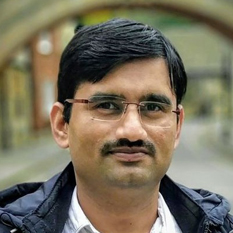
Dr. Nanasaheb D. Thorat
View More

Dr. Nanasaheb D. Thorat
University of Oxford, UK
Dr. Nanasaheb Thorat is an outstanding Experienced Researcher currently working as a Marie Curie Fellow at the University of Oxford, Medical Science Division. Dr. Thorat demonstrated the extraordinary ability of independent thinking, leadership, time-management, and communication qualities throughout his doctoral research and Marie Curie fellowship. Dr. Thorat is a two-time winner of the World's most prestigious fellowship, i.e. Marie Curie Fellowships and also working as an evaluation panel member of the Marie Curie Fellowships applications, for life and engineering sciences since the year 2019. Dr. Thorat has published 50 peer-reviewed journal research papers and articles, 5 Books, 10 book chapters, presented 5 Keynote Speech, 15 invited lectures, and 5 oral presentations at prestigious scientific peer-conferences in Singapore, France, Germany, USA, Ireland, Poland, South Korea, and India, received international acclaims and awards for research contribution, generated research fund in excess of > €750,000 (Rs 6.50 Crore), supervised students/junior researchers and actively participated in outreach and scientific dissemination for the service of the wider community. Dr. Thorat is the first Indian awardee of the European Commissions innovation Radar “Grand Prix of the Innovation Radar Prize 2020” and many other national and international acclaims on his name. Dr. Thorat is also the winner of other prestigious fellowships including, the Japanese Society for the Promotion of Science (JSPS) Fellowship in Japan (2017), PBC-Outstanding Fellowship, Israel (2016) and also worked as Senior Research Fellow at Samsung Biomedical Research Institute, South Korea (2014-2015). At the University of Oxford, He is working in the Medical Science Division jointly with the Engineering Science Division. His current research work involves designing new light-activated nanomedicine therapy and Raman imaging techniques for brain cancer of pediatric patients.
Title: Magnetic and Light activated dual modal cancer therapy using metal decorated magnetic nanostructures
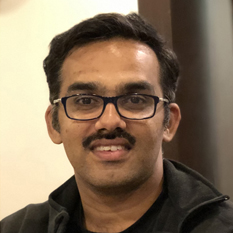
Dr. Narayanan T. N.
View More

Dr. Narayanan T. N.
Tata Institute of Fundamental Research, Hyderabad
Dr T N Narayanan FRSC is currently an Associate Professor at Tata Institute of Fundamental Research-Hyderabad, India. His research interests include energy storage, catalysis, and conversion, and advanced materials for environmental protection and healthcare. He has more than 140 international publications to his credit and three patents. He has received his Ph.D. from Cochin University of Science and Technology, Kerala and carried out his postdoctoral research at Rice University, USA. He had worked at CSIR-CECRI, India too as a scientist before moving to TIFR in 2014. More about him can be found at. https://www.tifrh.res.in/~tnn/
Title: Role of Electrode Electrolyte Interface Engineering in Electrodics
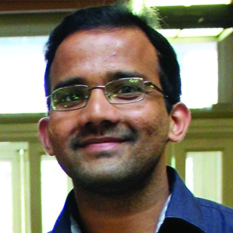
Dr. Narendra Kurra
View More

Dr. Narendra Kurra
IISER, Thiruvananthapuram, India
Dr. Narendra Kurra is currently working as an assistant professor at school of chemistry, IISER-TVM. He was a postdoctoral fellow at Drexel University and King Abdullah University of Science and Technology (KAUST), prior to becoming a Research Assistant Professor at A. J. Drexel Nanomaterials Institute, Drexel University, USA (November 2019-September 2020). He obtained his PhD from JNCASR, Bangalore in 2013. He did masters from school of chemistry, University of Hyderabad (2006-08). His Research interests include understanding of fundamental aspects of electrode/electrolyte interfaces, nanomaterials for electrochemical energy storage applications including high rate On-chip Energy Storage and hybrid metal-ion capacitors.
Title: Functional Transition metal carbides for energy storage applications
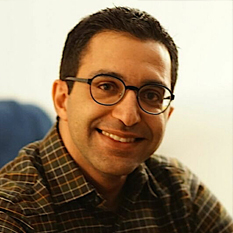
Dr. Navid Bizmark
View More

Dr. Navid Bizmark
Princeton University, USA
Dr. Bizmark earned his Ph.D. from the University of Waterloo, Canada, and is currently a postdoctoral research fellow at the Princeton Institute for the Science and Technology of Materials (PRISM) and Department of Chemical and Biological Engineering at Princeton University. His research interests include studying the transport of colloids in porous media and developing green smart materials with structured colloids and hybrid organic/inorganic nanostructured systems. He hopes to establish new, or improve current, technologies to sustainably supply clean water. Dr. Bizmark published a number of publications in the leading journals in the field, including Science Advances, ACS Central Science, Langmuir, ACS Sustainable Chemistry & Engineering, and Soft Matter, two book chapters and one book, and delivered presentations at national and international conferences, including the ACS, GRC, APS, APS-DFD, AGU, AIChE, and CSChE. He was nominated for Governor General’s Gold Medal and received a number of awards and scholarships, including the PCCM Postdoctoral Fellowship, Ontario Graduate Scholarship, the Royal Bank of Canada Water Scholarship, the Waterloo Institute of Nanotechnology Fellowship among other.
Title: Dynamics of microplastic particle deposition and erosion in aquifers and soils
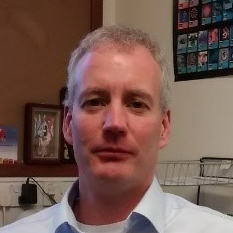
Dr. Neil Robertson
View More

Dr. Neil Robertson
University of Edinburgh, UK
Associate Editor of RSC Journal of Materials Chemistry C
Neil Robertson graduated from the University of Edinburgh and worked in FU Berlin, University of Wales and Imperial College London before returning to University of Edinburgh. He leads research on new molecular and nanomaterials for solar photovoltaics, photocatalysis, electrical energy storage materials and devices. He is Fellow of the Royal Society of Chemistry, Fellow of the Higher Education Academy, and Energy Technology Partnership (ETP) Theme Leader for Solar Energy. He has previously served as an Elected Member of Royal Society of Chemistry (RSC) Dalton Council and RSC Materials Chemistry Division Council, and is Associate Editor of RSC Journal of Materials Chemistry C. He is Dean International Partnerships for Science and Engineering at the University of Edinburgh.
Title: Bismuth-based materials for supercapacitors and batteries
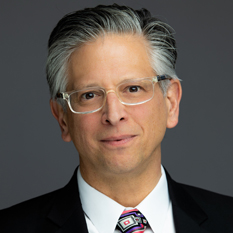
Dr. Paul Weiss
View More

Dr. Paul Weiss
University of California, Los Angeles USA
Editor-in chief ACS Nano
Paul S. Weiss holds a UC Presidential Chair and is a distinguished professor of chemistry & biochemistry, bioengineering, and materials science & engineering at UCLA. He received his S.B. and S.M. degrees in chemistry from MIT in 1980 and his Ph.D. in chemistry from the University of California at Berkeley in 1986. He was a postdoctoral member of technical staff at Bell Laboratories from 1986-88 and a visiting scientist at IBM Almaden Research Center from 1988-89. He served as the director of the California NanoSystems Institute and held the Fred Kavli Chair in NanoSystems Sciences at UCLA from 2009-14. Before coming to UCLA, he was a distinguished professor of chemistry and physics at the Pennsylvania State University, where he began his academic career in 1989. His interdisciplinary research group includes chemists, physicists, biologists, materials scientists, mathematicians, bioengineers, electrical and mechanical engineers, computer scientists, clinicians, and physician scientists. They focus on the ultimate limits of miniatu¬rization, exploring the atomic-scale chemical, physical, optical, mechanical, and electronic properties of surfaces, interfaces, supramolecular, and biomolecular assemblies. They develop new techniques to expand the applicability and chemical specificity of scanning probe microscopies. They apply these and other tools to study self- and directed assembly, and molecular and nanoscale devices. They advance nanofabrication down to ever smaller scales and greater chemical specificity to operate and to test functional molecular assemblies, and to connect to the chemical and biological worlds in neuroscience, gene editing, cancer immunotherapy, tissue engineering, and the microbiome. He has written over 400 publications, holds over 30 patents, and has given over 800 invited, plenary, keynote, and named lectures. Weiss has been awarded a National Science Foundation (NSF) Presidential Young Investigator Award (1991-96), the Scanning Microscopy International Presidential Scholarship (1994), the B. F. Goodrich Collegiate Inventors Award (1994), an Alfred P. Sloan Foundation Fellowship (1995-97), the American Chemical Society (ACS) Nobel Laureate Signature Award for Graduate Education in Chemistry (1996), a John Simon Guggenheim Memorial Foundation Fellowship (1997), a NSF Creativity Award (1997-99), the ACS Award in Colloid and Surface Chemistry (2015), the ACS Southern California Section Tolman Medal (2017), the ACS Patterson-Crane Award in Chemical Information (2018), and the IEEE Nanotechnology Pioneer Award (2019), among others. He was elected a fellow of the: American Association for the Advancement of Science (2000), American Physical Society (2002), American Vacuum Society (2007), ACS (2010), American Academy of Arts and Sciences (2014), American Institute for Medical and Biological Engineering (2016), Canadian Academy of Engineering (2017), IEEE (2021), Materials Research Society (2019), and an honorary fellow of the Chinese Chemical Society (2010) and Chemical Research Society of India (2020-21). He received Penn State’s University Teaching Award from the Schreyer Honors College (2004), was named a nanofabrication fellow at Penn State (2005), and won the Alpha Chi Sigma Outstanding Professor Award (2007). He was a visiting professor at the University of Washington, Department of Molecular Biotechnology (1996-97) and Kyoto University, Electronic Science & Engineering Department and Venture Business Laboratory (1998 and 2000), and a distinguished visiting professor at the Kavli Nanoscience Institute and the Joint Center for Artificial Photosynthesis at Caltech (2015). He is a visiting scholar at the Kavli Institute for Bionano Science & Technology and the Wyss Institute for Biologically Inspired Engineering at Harvard University (2015-). He held the Institut National de la Recherche Scientifique (INRS) Chaire d'excellence JacquesBeaulieu (2016-17) and was a Fulbright Specialist for the Czech Republic (2017). Weiss was a member of the U.S. National Committee to the International Union of Pure and Applied Chemistry (2000-05). He has been the technical co-chair of the Foundations of Nanoscience Meetings and thematic chair of the Spring 2009 and Fall 2018 ACS National Meetings. He was the senior editor of IEEE Electron Device Letters for molecular and organic electronics (2005-07), and is the founding editor-in-chief of ACS Nano (2007-). At ACS Nano, he won the Association of American Publishers, Professional Scholarly Publishing PROSE Award for 2008, Best New Journal in Science, Technology, and Medicine, and ISI’s Rising Star Award a record ten times.
Title: Atomically Precise Chemical, Physical, Electronic, and Spin Contacts
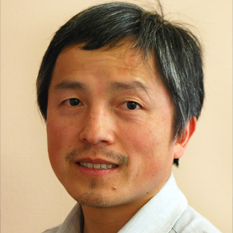
Dr. Peng Cao
View More

Dr. Peng Cao
The University of Auckland, New Zealand
Dr Peng Cao is an associate professor and the Deputy Head (Academic) of the Department of Chemical and Materials Engineering, at the University of Auckland, New Zealand. Dr Cao’s research interests are on light metals, powder metallurgy and new energy storage materials. He has published >150 referred journal articles and authored/edited four books. Dr Cao was the recipient of the Henry Marion Howe Medal, conferred by the ASM International in 2006. He was also a recipient of the AJ Park Commercialisation Collaboration Award, endorsed by the KiwiNet in 2014 – a prestigious research award in New Zealand. Dr Cao is a member of the Royal Society of New Zealand (MRSNZ), the Engineering New Zealand (MENZ), as well as other professional societies. He has organised/chaired >10 international conferences and delivered >10 keynote/invited talks.
Title: Ta/Nb co-doped Garnet Type Hybrid Solid State Electrolyte for High Performance Lithium Metal Batteries
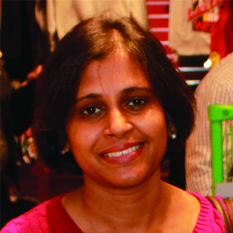
Dr. Poonam Singh
View More

Dr. Poonam Singh
Arizona State University, USA
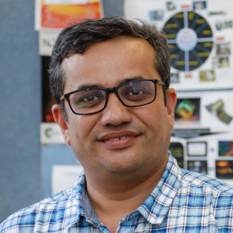
Dr. Prashant Sonar
View More

Dr. Prashant Sonar
Queensland University of Technology, Australia
Associate Editor, Flexible and Printed Electronics (Institute of Physics, London)
Prashant Sonar performed his doctoral work under the supervision of Professor Müllen at Max- Planck Institute of Polymer Research, Mainz, Germany and was awarded his PhD in 2004 from Johannes-Gutenberg University in Mainz. Dr. Sonar moved to Swiss Federal Institute of Technology (ETH), Zurich, Switzerland for doing his postdoctoral research as with Professor Schlüter from 2004 till 2006. From August 2006 till 2014, he was working as a Research Scientist at Institute of Materials Research and Engineering (IMRE), Agency of Science, Technology and Research (A*STAR), Singapore. Dr. Sonar received prestigious Future Fellowship (2013) from the Australian Research Council and was appointed as Associate Professor in July 2014 at Queensland University of Technology (QUT), Brisbane, Australia. At QUT, he established Organic and Printed Electronic Research group. He was also appointed as Visiting Professor at School of Material Science and Engineering,Indian Institute of Technology, Kanpur from 29th November 2017 till 31st December 2017. He also holds adjunct Associate Professor position with Griffith University, Australia. Currently, he is serving as an Associate Editor of the journal Flexible and Printed Electronics (Institute of Physics, London) and recently elected as Fellow of Royal Chemical Society (FRSC).
Prof. Sonar is interested in design and synthesis of novel -functional materials (small molecules, oligomers, dendrimers, and polymers) for printed electronics, (OFETs, OLEDs, OPVs, OLETs, OPDs, and Sensors) bioelectronics and supramoleculecular electronic applications. Dr. Sonar delivered more than 36 invited and contributed talks at various international conferences and institutes. He has authored or co-authored 133 peer-reviewed research papers in international journals (H-index-38 according to Google Scholar with total citations 5500) and filed 11 patents and patent application in regional and international level. Recently his two patents licensed to the multinational US based company.
Title: Carbon Dots From Human Hair Waste for Display, Sensing and Energy Harvesting Devices
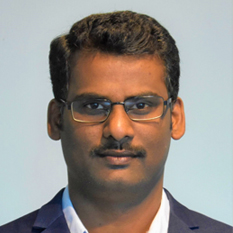
Dr. Putla Sudarsanam
View More

Dr. Putla Sudarsanam
CSIR-National Chemical Laboratory, Pune, India
Dr. Putla Sudarsanam is a Scientist at the Catalysis Division, CSIR-National Chemical Laboratory (CSIR-NCL), Pune, India. He obtained his Ph.D. degree in Chemistry (2015) from the CSIR-Indian Institute of Chemical Technology (Hyderabad, India). Before joining CSIR-NCL, he worked as a post-doctoral fellow at KU Leuven (Belgium, 2017-2019), Leibniz Institute for Catalysis (LIKAT, Germany, 2017), and RMIT University (Australia, 2014–2016).
His research focuses on developing industrially relevant catalytic processes for biomass valorization, CO2-to-chemcials, and synthesis of active pharmaceutical ingredients. He has been honored with many prestigious awards/fellowships, including Young Scientist Award to participate at the 67th Nobel Laureate Meeting-2017 (Germany), Marie Skłodowska-Curie Postdoc Fellowship-2017 (Belgium), Leibniz-DAAD Postdoc Fellowship-2016 (Germany), Best Ph.D. Thesis Award-2015 (The Catalysis Society of India), EuropaCat Ph.D. Student Award-2013 (XIth European Congress on Catalysis, France), and Endeavour Research Fellowship-2013 (Australia). He has edited three books (ACS and Elsevier), and published 60 peer-reviewed articles in high impact international journals and 4 book chapters with an h-index of 31 and more than 2600 citations. He is a Member of the Early Career Board of ACS Sustainable Chemistry and Engineering Journal (IF: 7.632) for 2020-2022 and listed in Stanford University's global list of top 2% scientists for the year 2019 in the Chemistry field.
Title: Shape-controlled nanosized materials for heterogeneous catalysis
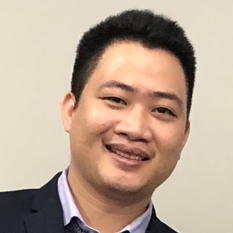
Dr. Quyet Van Le
View More

Dr. Quyet Van Le
Duy Tan University, Vietnam
Associate Editor, Solar Energy
Dr. Quyet Van Le received his Ph.D. degree from Chung-Ang University, Seoul, South Korea. After that, he has been working as a Senior Researcher at the Institute of Research and Development, Duy Tan University, Vietnam. He also servers as Visiting Professor at Henan Agricultural University, China and Visiting Researcher at Korea University, South Korea. His research focuses on the synthesis of nanomaterials such as halide perovskites, graphene, graphene oxides, 2-dimensional transition metal dichalcogenides for various electronic and optoelectronic applications such as solar cells, LEDs, photodetectors, resistive switching memories, and electrochromic windows. His research also involves in developing high-performance electrocatalysts and photocatalysts based on nanostructured materials for different applications in renewable energy generation and environmental remediation. He has published more than 140 research and review articles in top tier journals such as Advanced Materials, Advanced Functional Materials, Journal of Materials Chemistry A, Nano Energy, Chemical Engineering Journal, Journal of Hazardous Materials etc., and 2 book chapters. Currently, he was appointed as an associate editor in Solar Energy (IF ~ 4.6)
Title: Two dimensional materials as catalysts for water splitting
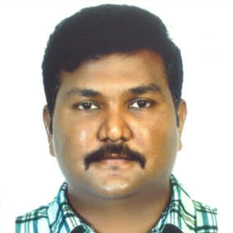
Dr. Rajakannu P
View More

Dr. Rajakannu P
KAIST, South Korea
P. Rajakannu received his B.Sc. and M.Sc. from Madurai Kamaraj University and Ph.D. from the University of Delhi. He was a Post-Doctoral Research Fellow in IIT Bombay, NTHU-Taiwan and KAIST-South Korea before joining KAIST, where he is presently a Research Professor. His research mainly focused on the area of synthetic phosphorescent materials applied to organic light-emitting diodes (OLED). He is a recipient of the BK21 Research Professor (Brain Korea). He has published 28 international papers including a Coordination Chemistry Review paper and filed 5 international patents including 2 US patents.
Title: Ir(III)-Based Phosphorescent Materials for High Efficient OLEDs
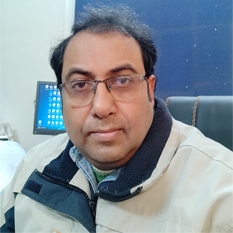
Dr. Raj Kumar Dutta
View More

Dr. Raj Kumar Dutta
IIT Roorkee, India
Dr. R.K. Dutta is presently Head of the Centre of Nanotechnology at IIT Roorkee. He is a professor in Chemistry at the Department of Chemistry IIT Roorkee. Dr. Dutta is M.Sc and Ph.D in Chemistry and then worked as a post doc in abroad for 6 years. In May 2006 he joined IIT Roorkee in May 2006 as Assistant Professor. He is a materials chemist with a focus on understanding how small dimension materials interact with the chemicals of interest. His area of research is quantum dot based sensors, photocatalyst, smart nanoadsorbents and supercapacitors. He has published more than 70 papers in reputed international peer reviewed journals. In addition, he has more than 40 papers in conferences and delivered 21 invited talks in India and in abroad. He is members in various research societies.
Title: Quantum dots as probes for detection of some inorganic and organic species
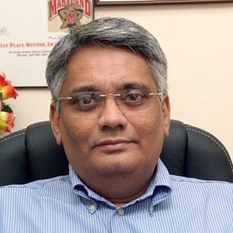
Dr. Ramachandra Rao
View More

Dr. Ramachandra Rao
IIT Chennai, India
Title: Quantum Materials, Nanoscience and Advances in Nanotechnology
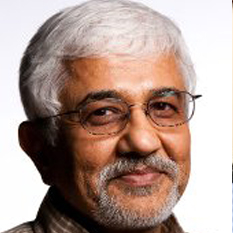
Dr. Ravindra Pandey
View More

Dr. Ravindra Pandey
Michigan Technological University, USA
Ravindra Pandey is Professor and Chair of Physics at the Michigan Technological University, Houghton, MI. Pandey received his education at Hari Singh Gaur University, Sagar, National Physical Laboratory, Delhi, Atomic Energy Research Laboratory, Harwell, UK, and University of Manitoba, Winnipeg, Canada. He has participated in multi-disciplinary efforts (theoretical and experimental) to build the programs in novel nanostructures, and the application of chalcopyrite semiconductors as the next generation optoelectronic materials with the industrial and national laboratories, and is the author of more than 150 publications. He has also co-organized and participated in several international conferences in the areas of Materials Physics and Nanoscale Science. Pandey is a Fellow of the American Physical Society.
Title: Interface driven properties of 2D materials
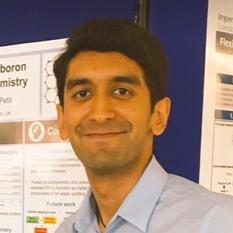
Dr. Ravi Shankar
View More

Dr. Ravi Shankar
Imperial College London, UK
My name is Ravi Shankar and I am a PhD student/post doctoral researcher in the Department of Chemical Engineering at Imperial College London in the UK. Prior to undertaking my doctoral studies, I graduated with First Class Honours (ranked 3rd in final year) Master of Engineering (MEng) in Chemical Engineering with a Year Abroad in 2016. During my undergraduate studies, I participated in an exchange programme at RWTH Aachen University in 2015, having been awarded an ERASMUS+ Study Grant from the European Union, where I studied the 3rd year of my degree in German and completed my bachelor thesis on transport phenomena in hollow fibre membranes with distinction under the supervision of Professor Matthias Wessling in the Membrane Sciences and Separation Processes research group. Upon completion of my undergraduate studies, I was awarded the prestigious and highly competitive Departmental PhD Scholarship by the Chemical Engineering Department at Imperial College to pursue my doctoral research. During my PhD, I received the Bansal Bursary (£6000) in 2017, awarded by the Department to a student with outstanding academic track record and research potential. In August 2019, I was selected as Graduate Teaching Assistant (GTA) of the Year 2019 amongst all teachers in the Department of Chemical Engineering and was nominated for overall Teacher of the Year by the Faculty of Engineering. My research interests are focused on the development of nanomaterials, both porous and non-porous, for solar fuel production (namely CO2 photoreduction to valuable chemicals), photocatalysis and I am passionate about integrating and expanding my research into water purification technologies as well. I have published several papers during my PhD in reputable, high impact factor journals such as Journal of Materials Chemistry A, Journal of Physical Chemistry C, Chemical Science, and the Chemical Engineering Journal. My Journal of Materials Chemistry A paper, in which we present a proof-of-concept for the application of porous boron nitride photocatalysts for CO2 capture and photoreduction, was instrumental in winning a prestigious 1.5 million Euro Starting Research Grant from the European Research Council (ERC) in September 2019.
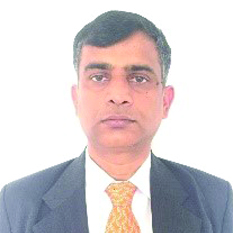
Dr. M V Reddy
View More

Dr. M V Reddy
Institute of Research Hydro-Québec, Canada
Dr. M.V. Reddy obtained his Ph. D (2003) with highest honours in the area of Materials Science from University of Bordeaux 1, France. Dr. M.V. Reddy currently working as a Senior Researcher at Institute of Research Hydro-Québec, Centre of Excellence in Transportation Electrification and Energy Storage, Hydro-Québec, Montreal, Canada. Previously (from July 2003 to May 2019), he worked at National University of Singapore (NUS) at the Department of Materials Science and Engineering, Chemistry and Physics. For the last 20 years, he has been working on Materials for Energy Storage (cathodes, anodes, supercapacitors and solid electrolytes), including novel methods of synthesis ex: Molten salt method (top1 publication list (source: scopus) and evaluation of functional properties of materials. He has published around 200 papers in various international journals. His h-index; 64 and over 15100 citations. Recently cited top 2% highly cited researcher in area of Energy (his Ranking 1002 out of 186500 researchers) (year 2020). He is serving as editorial advisory board member in “Materials Research Bulletin and Journal of Energy Storage`` (Elsevier) several other open access Journals (Materials, Energies and Molecules, MDPI) and Regional editor: Nanoscience & Nanotechnology-ASIA.
He conducted several workshops related to nano functional materials and Energy storage & Conversion and delivered 106 (Plenary (14), Keynote (14), Invited talks (62) and 16 contributed talks) at various conferences and conducted few workshops on Battery materials fundamentals, synthesis, and characterization techniques and given popular on nano Materials outreach talks to college and high school students all over the world. Recently he won 2021 Battery Materials electrochemistry award from the Electrochemical Society of India, Indian Institute of Science (IISc), Bangalore, India (7th Prof.S.M. Mayanna Memorial Lecture).
Dr. Reddy is an Invited life member in International Centre for Diffraction Data (ICDD), USA from 2010. Elected committee Member in Institute of Physics, Singapore (2015- March 2018), Materials Research Society (MRS) Singapore (two times, 2016 to 2020), Global Materials Network (2012- till now) and Member in MRS-USA and International Electrochemical society (ISE). He served as a theme chair for Energy and Environment (2012) and session chair for Batteries, supercapacitors & Fuel cells (2012, 2014, and 2016) and materials for Environmental protection (2012) in International Conference of Young Researchers on Advanced Materials (ICYRAM-IUMRS). Local Organizing committee member in 2018 Advanced Materials Conference in Singapore. He trained many (200) high school/college and International exchange B.Tech., M. S and Ph.D. students (mentored 7 students) for electrochemistry and Materials Science. His projects won many awards in national and international conferences. He won Outstanding Science Mentorship Award (2010- 2018), from Ministry of Education, Singapore, and Inspiring Research Mentor Award (2011 to 2019) from NUSHS. His projects won awards in national and international conferences. More details of his publications are listed in http://scholar.google.com.sg/citations?user=pWKr2M0AAAAJ&hl=en;
Scopus ID: 0000-0002-6979-5345
Title : Novel nanomaterials for metal (Li,Na,K) ion batteries
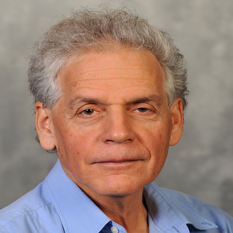
Dr. Reshef Tenne
View More

Dr. (Emeritus) Reshef Tenne
Weizmann Institute, Israel
Prof. Tenne studied in the Hebrew University (1966-1976) and was a post-doc in Battelle Institute in Geneva (1976-1979). He joined the Weizmann Institute in 1979 and received tenure in 1985. He was promoted to a full professor in 1995. He published more than 350 original papers and about 80 invited chapters in books and review articles. He served as the head of the Department of Materials and Interfaces of the Weizmann Institute (2000-2007), the founder and Director of the Helen and Martin Kimmel Center for Nanoscale Science (2003-2014) and held the (inaugural) Drake Family Chair of Nanotechnolgy (2005-2014). He served in many scientific public organizations and received numerous awards and recognitions. He was elected to the Israel Academy of Sciences in 2011 and Academia Europaea on 2012. He recently received the EMET Prize (2020) in exact sciences from the Prime Minister of Israel. His research is focused on nanoparticles from layered (2D) compounds, like WS2 (MoS2). In 1992 he discovered that nanoparticles of 2D compounds are unstable against folding and seaming, forming fullerene-like (IF) structures and inorganic nanotubes (INT) at elevated temperatures. He studied the synthesis of such nanoparticles and their properties and developed many applications based on IF/INT. These nanoparticles serve as superior solid lubricants in lubricating fluids and in metal forming fluids with a large range of commercial products and expanding market-share. Numerous other applications as additives for reinforcing polymer nanocomposites, have been perceived and are currently being developed for variety of applications. Home Page: http://www.weizmann.ac.il/materials/tenne/
Title: Why do nanocrystals of 2D materials form nanotubes and why is it important?
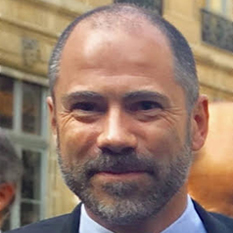
Dr. Roger C. Hiorns
View More

Dr. Roger C. Hiorns
IPREM - CNRS/UPPA, France
Roger Hiorns is a Directeur de Recherche with the CNRS and is based at the Université de Pau des Pays de l’Adour (UPPA) in the IPREM research unit. He did his joint PhD at the Universities of Montpellier in France and Canterbury in the UK, followed by post-doctoral fellowships at the ENSCPB in Bordeaux and UPPA. He has published around 70 papers mostly in the field of polymer synthesis for organic photovoltaics. He was coordinator of the FP7-PEOPLE-ITN-ESTABLIS project which delivered the first ten year lifetime organic solar panels with commercial applicability, and has been responsible for more than 4.2M€ of research funding. Since 2014 has been the Chair of the IUPAC Subcommittee on Polymer Terminology and since 2000 a member of the Board of the journal Polymer International.
Title: Large scale organic photovoltaics - experiences from small community installations
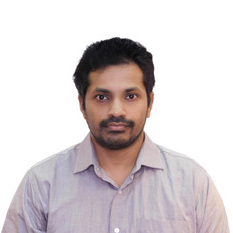
Dr. Rohit John
View More

Dr. Rohit John
ETH Zurich Switzerland
Dr. Rohit Abraham John is a Postdoctoral Research Fellow at the Department of Chemistry and Applied Biosciences, Eidgenössische Technische Hochschule (ETH) Zurich. He is a recipient of the prestigious ETH Fellowship (2020-22). He obtained his bachelor’s degree in Electronics and Communication Engineering from Cochin University of Science and Technology, India (2011) and Masters in Microelectronics from Nanyang Technological University (NTU), Singapore (2014). He continued his doctoral studies at NTU (2015-19) in the area of neuromorphic electronics, investigating novel materials and devices such as halide perovskites, transition metal dichalcogenides and metal oxide semiconductors for computing. His expertise lies in the physics of semiconducting materials and devices, and his primary research interest is focussed on optoelectronic configurations for emerging memory and computing applications, including transistors and memristors. His research work has been published (>25 publications) in many high impact factor journals such as Nature Communications, Advanced Materials, ACS Nano, Advanced Energy Materials, etc. For his outstanding research and academic excellence, he has received numerous prestigious awards such as the Materials Research Society Silver Medal in 2019, Arizona, USA; Research Excellence Award, 2019, NTU, Singapore; MRS Speaker Award 2018, Arizona, USA; Advanced Micro Devices (AMD) Best Student Award, 2014 and the DAAD Scholarship, German Government 2012-14.
Title: Novel computing substrates for neuromorphic electronics
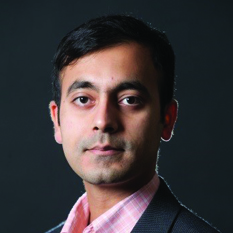
Dr. Rohit N Karnik
View More

Dr. Rohit N Karnik
Massachusetts Institute of Technology, USA
Rohit Karnik is Professor and Associate Department Head for Education in Mechanical Engineering at the Massachusetts Institute of Technology, where he leads the Microfluidics and Nanofluidics Research Group. His research focuses on the physics of micro- and nanofluidic flows and the design of micro- and nanofluidic systems for applications in water, healthcare, energy, and environment. He obtained his B. Tech. degree from the Indian Institute of Technology at Bombay in 2002, and his PhD from the University of California at Berkeley in 2006 under the guidance of Prof. Arun Majumdar. After postdoctoral work with Prof. Robert Langer at MIT, he joined the Department of Mechanical Engineering at MIT in 2007. Among other honors, he is a recipient of the Institute Silver Medal (IIT Bombay, 2002), NSF Career Award (2010), Keenan Award for Innovation in Undergraduate Education (2011), DOE Early Career Award (2012), IIT Bombay Young Alumnus Achiever Award (2014), and the Ruth and Joel Spira Award for Distinguished Teaching (2018).
Title: Nanofluidic Transport across Nanoporous Atomically Thin Graphene and its Development as a Next-Generation Membrane
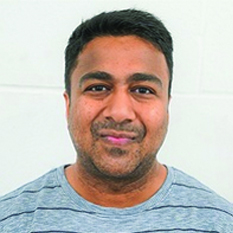
Dr. Sagar M. Jain
View More

Dr. Sagar M. Jain
Cranfield University, UK
2018, Dr. Sagar M. Jain accepted the Associate Professor position at Cranfield University and will be leading and developing Photovoltaics and Optoelectronic research group at Cranfield. Presently, Sagar is a Senior Research Fellow at London South Bank University (LSBU), UK. Working on the Indo-UK SUNRISE project to deliver electricity to rural Indian villages through Photovoltaics. Sagar carried out his Ph.D. studies in the University of Torino, Italy. Before joining London South Bank University and Imperial College London. Before joining LSBU Sagar was a Marie-Curie COFUND fellow (with Prof. James R. Durrant) and Wallenberg foundation-funded fellow (with Prof. Gerrit Boschloo and Prof. Anders Hagfledt) at Swansea University, UK and Uppsala University, Sweden respectively. Working in the solar cell field since the last 12+ years, Sagar focuses on different spectroscopic as well as photovoltage characterization techniques to understand structure-property-performance-stability relation in 3rd generation photovoltaics. One of the several domains of his research involves a fundamental investigation to minimize the toxicity and scale-up of different types of Perovskite as well as Tandem solar cells. Sagar secured many prestigious fellowships – including recent Experienced researcher Marie-Curie award (2016-2019); Ministry of Education, University and Research (MUIR) fellowship (2007-2011), Italy and Baden-Württemberg fellowship (2012-2014), Germany and prestigious Wallenberg foundation scholarship (2014-2016) to work at Uppsala university, Sweden on 3rd generation solar cells. Sagar Published 38 research articles, 2 patents and 2 book chapters. Research is published in prestigious, high impact journals including Nature family – communication chemistry, Energy Environmental science (IF=33.8) ; Advanced Materials (IF=21.9), Advanced energy materials (IF=21.8), ACS Nano (IF=13.7), Nano Energy (IF=13) and Journal of Material Chemistry A (IF=9.1) etc For more information about Sagar’s research activities please visit https://scholar.google.com/citations?user=73JSLdcAAAAJ&hl=en
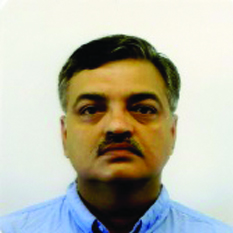
Dr. Saikat Talapatra
View More

Dr. Saikat Talapatra
Southern Illinois University, USA
Saikat Talapatra received his B.Sc. in Physics and B.Ed degree from Regional College of Education Bhubaneswar. Thereafter he finished his M.Sc. in Physics form Jadavpur University, Kolkatta and his MS and Ph.D. from Southern Illinois University Carbondale (SIUC), Illinois, USA. After spending some time at Rensselaer Nanotechnology Center, Troy NY as a Post-Doctoral Research Associate with Prof. P. M. Ajayan's group, he returned to SIUC as a faculty. He is currently the Chair and Professor of Physics at SIUC. His current research interest involves exploring and discovering nanotechnology based solutions for applications in Electronics, Energy and Environment.
Title: Nanoscale Materials and Structures: A Perspective on Future Applications in Energy, Environment & Electronics
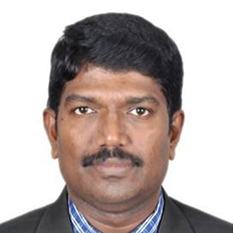
Dr. Sambandam Anandan
View More

Dr. Sambandam Anandan
NIT Trichy, India
Professor Sambandam Anandan is a physical chemist who specializes in energy and environmental chemistry for various real-time applications. He teaches undergraduate and postgraduate chemistry at the National Institute of Technology, Tiruchirappalli. His research work to date is largely multi-disciplinary involving Nanomaterials, sonochemistry, photochemistry, photocatalysis, electrocatalysis, Fuel cell catalysts, photo-splitting of water molecules, bio-molecule interactions, sensors, supercapacitors, NLO applications, organic, inorganic & polymer solar cells. Apart from these, his general contributions towards the welfare of the institute and education are many, which may not be explained in a single word. Under his guidance, twenty-one Ph.D. and forty-five M.Sc. students completed their degrees. Besides, seven Ph.D. and two M.Sc. students are pursuing research under his guidance. He has edited/co-edited several books and special issues for journals; published ~292 refereed papers (H-Index: 41) in high impact international journals and books; and delivered over 160 invited/keynote/plenary lectures at international conferences and academic institutions. Anandan has successfully organized many national/international scientific conferences/workshops and managed several national and international competitive research grants. He has served on many University committees and scientific advisory boards of external scientific organizations. Anandan is the recipient of several prizes, awards, and fellowships, including the Hiyoshi Environmental Award awarded by Hiyoshi Corporation Japan for Outstanding contribution to applied study for Environmental Conservation and Protection. He is a Fellow of the CRSI and TNASc since 2010.
Title: Facile Synthesis of Metal-Oxide Nanoparticles Intercalated Unzipped Multi-Walled Carbon Nanotubes Via Ultrasound-Assisted Route for Symmetric Supercapacitor Devices
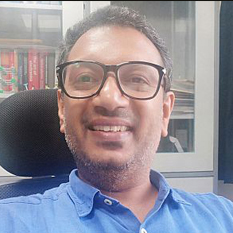
Dr. Sameer Sapra
View More

Dr. Sameer Sapra
Indian Institute of Technology, Delhi, India
Title: 2D MoSe based Hybrid nanoheterostructures for catalytic and optoelectronic applications
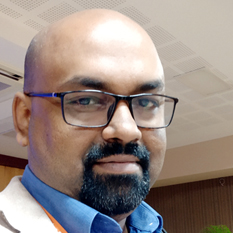
Dr. Santanu Das
View More

Dr. Santanu Das
IIT BHU, India
Dr. Santanu Das is currently appointed as Assistant Professor in the Department of Ceramic Engineering, Indian Institute of Technology (BHU), Varanasi. Before joining this position, he worked as Research Scientist at the University of North Texas, USA. Dr. Das did his Ph.D. and Masters from Florida International University, USA, and IIT (BHU), respectively. His research is actively involved in the synthesis and characterizations and engineering of various functional nanostructures, including 2D graphene and transition metal di-chalcogenides (TMDs), nanoparticles, nanocomposites, quantum dots, etc. His research areas include the development of various materials for many applications, including transistors, capacitive-sensors, energy storage, electrochemical sensors, energy-harvesting, and other optoelectronics. Dr. Das is a recipient of numerous prestigious awards, including "Outstanding Ph.D. dissertation award", IIT-gold Medal in his Master courses, "The American Ceramic society's McCARE Award", "MRS Award", "Early Career Awards", “MHRD-STARS awards” and many more. He got the honor of becoming an "IEEE Senior Member" in the year 2017 for his outstanding research contribution for the last ten years. Dr. Das published ~ 1 book, ~ 6 book chapters, a total of more than 75 SCI-indexed peer-reviewed research articles, and holds 14 patents (including two US patents). Recently, he has also transferred a few technologies from lab-scale to start-up industrial scale for developing indigenous products in India.
Title: Emerging functional nanomaterials for electronic, optoelectronic and energy devices
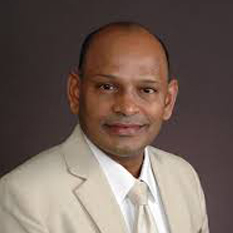
Dr. Seeram Ramakrishna
View More

Dr. Seeram Ramakrishna
NUS, Singapore
Editor-in-Chief of Springer NATURE journal Materials Circular Economy
Professor Seeram Ramakrishna, FREng, Everest Chair is among the top three impactful authors at the National University of Singapore, NUS (https://academic.microsoft.com/institution/165932596) which is ranked among the top ten engineering universities of the world. He is the Director of Center for Nanotechnology & Sustainability, and regarded as the guru of electrospinning & nanofibers (http://nart2020.com/conferenceinfo/). His research contributions received ~115,000 citations and ~ 160 H-index. He is named among the World’s Most Influential Minds (Thomson Reuters), and the Top 1% Highly Cited Researchers in materials science and cross-field categories (Clarivate Analytics). Microsoft Academic ranked him among the top 26 authors out of three million materials researchers worldwide (https://academic.microsoft.com/authors/192562407). Listed among the top three scientists of the world as per the Stanford University researcher study on career-long impact of researchers or c-score (https://drive.google.com/file/d/1bUJrvurVVBbxSl9eFZRSHFif7tt30-5U/view). He is an elected Fellow of UK Royal Academy of Engineering (FREng); Singapore Academy of Engineering; Indian National Academy of Engineering; and ASEAN Academy of Engineering & Technology. He is an elected Fellow of International Union of Societies of Biomaterials Science and Engineering (FBSE); Institution of Engineers Singapore; ISTE, India; Institution of Mechanical Engineers and Institute of Materials, Minerals & Mining, UK; and American Association of the Advancement of Science; ASM International; American Society for Mechanical Engineers; and American Institute for Medical & Biological Engineering, USA. He is a senior member of IEEE, USA. He is the Editor-in-Chief of Springer NATURE journal Materials Circular Economy (https://www.springer.com/journal/42824/editors). European Commission Director-General for Environment, Excellency Daniel Calleja Crespo said “Professor Seeram Ramakrishna should be praised for his personal engagement leading the reflections on how to develop a more sustainable future for all” in his foreword for the Springer Nature book on Circular Economy (ISBN: 978-981-15-8509-8). He is a member of UNESCO’s Global Independent Expert Group on Universities and the 2030 Agenda (EGU2030). He is an Associate Editor of Advanced Fiber Materials journal (https://www.springer.com/journal/42765/editors) and eScience journal (http://www.keaipublishing.com/en/journals/escience/editorial-board/).
Title: Future Healthcare: Intelligent Materials & Systems
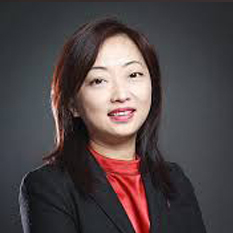
Dr. Shirley Meng Y
View More

Dr. Shirley Meng Y
University of California, USA
Editor-in-Chief for MRS Energy & Sustainability
Dr. Y. Shirley Meng received her Ph.D. in Advance Materials for Micro & Nano Systems from the Singapore-MIT Alliance in 2005, after which she worked as a postdoc research fellow and became a research scientist at MIT. Shirley currently holds the Zable Endowed Chair Professor in Energy Technologies and is Professor of NanoEngineering and Materials Science, University of California San Diego (UCSD). She is the founding Director of Sustainable Power and Energy Center (http://spec.ucsd.edu). Shirley received the National Science Foundation (NSF) CAREER award in 2011, UCSD Chancellor’s Interdisciplinary Collaboratories Award in 2013, Science Award in Electrochemistry by BASF and Volkswagen in 2014, C.W. Tobias Young Investigator Award of the Electrochemical Society (2016), IUMRS-Singapore Young Scientist Research Award (2017),International Coalition for Energy Storage and Innovation (ICESI) Inaugural Young Career Award (2018), American Chemical Society ACS Applied Materials & Interfaces Young Investigator Award (2018) and Finalist for the Blavatnik National Award (2018). Her research group – Laboratory for Energy Storage and Conversion (LESC) – focuses on functional nano and micro-scale materials for energy storage and conversion. The more recent programs include the design, synthesis, processing, and operando characterization of energy storage materials in advanced rechargeable batteries; new intercalation materials for sodium ion batteries; and advanced flow batteries for grids large scale storage. Shirley is the author and co-author of more than 200 peer-reviewed journal articles, 2 book chapter and 6 patents. She serves on the executive committee for battery division at the Electrochemical Society and she is the Editor-in-Chief for MRS Energy & Sustainability.
Titl: From Atom to System, Enabling the Tera-Scale Energy Transition
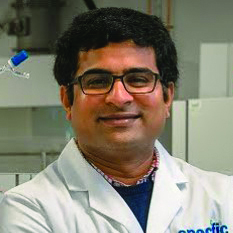
Dr. Sudhagar Pitchaimuthu
View More

Dr. Sudhagar Pitchaimuthu
Swansea University, UK
Dr. Sudhagar Pitchaimuthu is Ser Cymru-II Rising Start Fellow at SPECIFIC, College of Engineering, Swansea University (SU). He is leading "Multifunctional Photocatalyst and Coating" research group at SU. His research expertise is ‘nanomaterial synthesis and coatings’ towards constructing low-cost solar energy-driven photoelectrochemical system/devices. Mainly his group focuses on utilising the abundance, sustainable solar energy for multifunctional applications such as energy conversion devices (solar cells and solar fuel cells), environmental clean-up (photocatalytic water treatment, air purification) and biosensors. His current research interest is to develop a) semiconductor thin film-based solar light photo absorbers (metal oxide, metal chalcogenides), b) Quantum dot films/coating, c) less expensive Pt-free water oxidation/reduction catalyst. His research is jointly funded by the Welsh Government and European Commission through the European Regional Development Fund (ERDF) under Sêr Cymru II-Rising Star Fellowship scheme (£ 1 M) over five years (2017-2022). Dr. Sudhagar graduated from Physics discipline, Bharathiar University, India in 2009. He was working as Research Assistant Professor during 2009-2013 under Prof. Yong Soo Kang at Center for Next Generation Dye-sensitized Solar Cells in Hanyang University, South Korea. Concurrently, he has been serving as visiting scientist to the Department of Applied Physics, University of Jaume I, Spain from 2011. He was a recipient of JSPS award from Japan Society for the Promotion of Science, Japan in 2013. Dr. Sudhagar has published more than 70 articles in peer-reviewed journals (citations: 1904, h index: 27), and contributed 5 book chapters. He has also chaired and co-organised 5 international conferences and workshops.
Title: Current Practices in Photocatalytic Pharmaceutical Water Pollutants Treatment: Is it safe and effective?

Dr. Sunil Bhand
View More

Dr. Sunil Bhand
BITS Goa, India
Title: Nanoprobe integrated field portable biosensors and applications
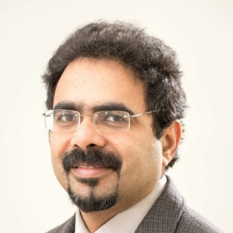
Dr. Suresh C Pillai
View More

Dr. Suresh C Pillai
Institute of Technology Sligo, Ireland
Associate editor, Chemical Engineering Journal
Suresh C. Pillai obtained his PhD in the area of Nanotechnology from Trinity College Dublin and then performed his postdoctoral research at California Institute of Technology (Caltech), USA. Upon completion of this appointment he returned to Trinity College Dublin as a Research Fellow before joining CREST-DIT as a Senior Scientist in April 2004. He has joined IT Sligo in 2013 as a senior lecturer in nanotechnology and currently leads the Nanotechnology and Bio-Engineering Research Group. He is the recipient of ‘Boyle-Higgins Award -2019’ from the Institute of Chemistry Ireland. He is an elected fellow of the UK’s Royal Microscopical Society (FRMS) and the Institute of Materials, Minerals and Mining (FIMMM). He has also completed an executive MBA from Dublin City University, in 2009. Suresh was responsible for acquiring more than €5 million direct R&D funding. He has published several scientific articles in leading peer reviewed journals has contributed to several book chapters, has presented in more than hundred international conferences and has delivered over hundred international invited talks. Suresh has also been invited to deliver keynote/plenary speeches at various international conferences including "Global Research Efforts on Energy and Nanomaterials (GREEN 2017)", Taipei, Taiwan, 22nd December 2017; International Symposium of Environmental Catalysis (ISEC), South-Central University for Nationalities, Wuhan, China (2016); IWA Symposium on Environmental Nanotechnology in Nanjing, China (2013), the International Green technology conference, India (2013) and the European Photocatalysis conference in Slovania (2013). He is the lead inventor in two granted US patents (awarded in 2013 and 2015) and one UK patent (awarded in 2015) and a number of international patents (pending). His research work was featured in various international media such as BBC World, BBC London, RTE-1 TV, Ocean FM radio and in a number of national and international print media (Times UK, The Guardian, Irish Times etc). Suresh is a recipient of the ‘Industrial Technologies Award 2011’ for licensing functional coatings to Irish companies. He was also the recipient of the ‘Hothouse Commercialisation Award 2009’ from the Minister of Science, Technology and Innovation and also the recipient of the ‘Enterprise Ireland Research Commercialization National Award 2009’. He has also been nominated for the ‘One to Watch’ award 2009 for commercialising R&D work (Enterprise Ireland). One of the nanomaterials based environmental technologies developed by his research team was selected to demonstrate as one of the fifty ‘innovative technologies’ (selected after screening over 450 nominations from EU) at the first Innovation Convention organised by the European Commission on 5-6th December 2011. He is the national delegate and technical expert for ISO standardization committee and European standardization (CEN) committee on photocatalytic materials. He is an associate editor for the Chemical Engineering Journal and Editorial Board Member for the journal Applied Catalysis B (Elsevier). His full research publications list can be viewed at http://scholar.google.com/citations?hl=en&user=4zkNK7sAAAAJ&view_op=list_works
Title: Semiconductor Nanomaterials for Photocatalytic Applications
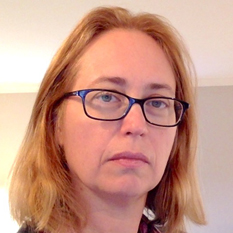
Dr. Svetlana Boriskina
View More

Dr. Svetlana Boriskina
Massachusetts Institute of Technology, USA
Lead Editor, Energy and Environmental Optics Express
Svetlana V. Boriskina is a physicist and engineer who studies light-matter interactions on nanoscale and develops new smart materials and devices for solar energy harvesting, personal thermal comfort, night vision, space exploration, and bio-chemical sensing. She leads the Multifunctional Metamaterials research group at MIT, where the ongoing projects focus on the development of sustainable fabrics for passive thermoregulation and anti-microbial protection, photonic meta-materials with structural colors similar to the butterfly wings, opto-mechanical energy harvesters that work day and night, and photonic biosensor platforms for rapid detection of chemicals and viral pathogens. As the Lead Editor of the Energy and Environmental Optics Express, Svetlana is helping to disseminate scientific knowledge and encourage the international collaborative effort to address challenges in the water-energy nexus, photonics, metamaterials, and environmental sensing. More info: http://sboriskina.mit.edu Contact: sborisk@mit.edu
Title: Meeting - and preventing - new challenges in bio(chemical) sensing
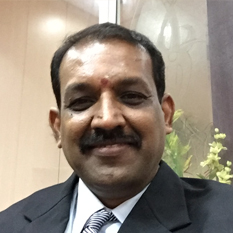
Dr. Swaminathan Viswanathan
View More

Dr. Swaminathan Viswanathan
Galaxy group, Singapore
ACADEMIC: Ph.D (Material Science) 2002 Alagappa University India
M.Sc. (Physics) 1993 Alagappa University India B.Sc. (Physics) 1991 Madurai Kamraj University India. RESEARCH INTERESTS Recycling - Waste material management High temperature material synthesis ( Microwave / Induction) Nanomaterials / Nanocomposites synthesis Materials characterization and analytical techniqueTitle: Impact of nanotechnological applications for environmental remediation: Solid, liquid and gas
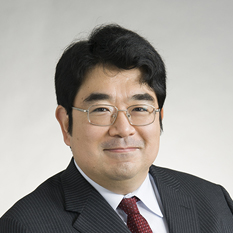
Dr. Takao Mori
View More

Dr. Takao Mori
National Institute for Materials Science, Japan
Associate Editor, Materials Today Physics, Materials for Renewable and Sustainable Energy
National Institute for Materials Science (NIMS)
Group Leader & Principal Investigator (PI)
International Center for Materials Nanoarchitectonics (WPI-MANA)
Namiki 1-1, Tsukuba 305-0044, Japan
& Professor, Graduate School Program, University of Tsukuba
Email: MORI.Takao@nims.go.jp
http://samurai.nims.go.jp/MORI_Takao-e.html
Education:
1996 University of Tokyo, Faculty of Science, Dept. of Physics, PhD
Research fields: Thermoelectrics, Thermal Management, Solid State Physics, Inorganic Materials Science, Solid State Chemistry
<21 Books & book chapters (e.g. “Thermoelectric Nanomaterials”, ed. K. Koumoto and T. Mori, Springer Series in Materials Science (Springer, Heidelberg, 2013) pp. 1-375.)
324 Papers
30 Patents awarded and submitted
100+ Invited talks
Title: Solid state conversion of waste heat to electricity: The thermoelectric material science challenge
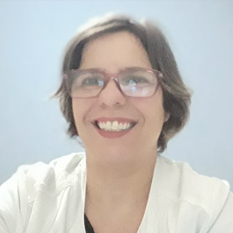
Dr. Talita Mazon
View More

Dr. Talita Mazon
Center of Technology of Information Renato Archer, Brazil
Dr. Talita Mazon hold the Chair of Senior Research in the Division of Microsystems and Nanoelectronics of the Center of Technology of Information Renato Archer, since 2008. She is Lider of the Functional Nanomaterials Group and substitute Head of the General Coordination of Projects and Service. She received her PhD in Chemistry from São Paulo State University (Unesp), Institute of Chemistry, Araraquara, Brazil. Following post-doctoral years at USP and UNESP, Brazil, she joined the Center of Technology of Information Renato Archer – CTI where she held the Head of the Electronic Packaging Division. She has published over 70 papers and over 290 citations in the field of functional nanomaterials applied for sensors, energy harvesting, storage and DRAM devices, and she is a co-author of one book. She serves on technical committees and reviewer in various capacities. In 2020, her work “Development of portable tests for the detection of COVID-19” was a finalist in the VI Fleury Group Innovation Award (PIF) for contributions to development of technologies for diagnosis and detection of COVID-19.
Title: Development of fast and accurate electrochemical tests for early diagnosis of COVID-19
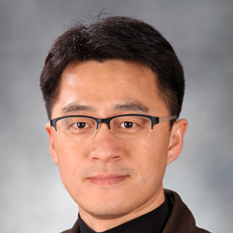
Dr. Unyong Jeong
View More

Dr. Unyong Jeong
POSTECH, South Korea
Associate Editor, RSC Journal of Materials Chemistry C
Unyong Jeong is a professor of Material Science and Engineering at Pohang University of Science and Technology (POSTECH) in Korea and a member of Korea academy of science and technology. He received B.S. degree (1998), M.A. degree (2000), and Ph.D. degree (2003) in chemical engineering in POSTECH. After working as a postdoctoral fellow at University of Washing in Seattle, he started his independent research career as an assistant professor in Yonsei University in Korea (2006). He moved to POSTECH (2015) as a Se-Ah distinguished professor. He received Young Scientist Presidential Award (2011), Asian Lecture Award from Japanese chemical society (2013), Nano Korea Revolutionary Award (Korean Prime Minister award) (2020). He is a member of Korean Academy of Science and Technology and an associate editor of Journal of Materials Chemistry C. His research includes fabrication of flexible stretchable electronic devices and synthesis of nanostructured materials.
Title: Materials design for stretchable electronic sensors
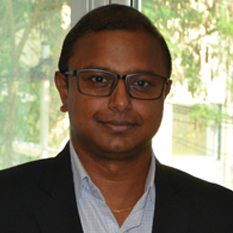
Dr. Venkata Krishnan
View More

Dr. Venkata Krishnan
IIT Mandi, India
Dr. Venkata Krishnan completed his Ph.D. in Physical Chemistry in 2006 at the University of Stuttgart, Germany. Subsequently, he worked as a postdoctoral researcher at the University of Pennsylvania, U.S.A. from 2006 to 2010 and then as a research associate at the National Institute for Materials Science (NIMS), Japan from 2010 to 2012. He joined as a faculty at the Indian Institute of Technology (IIT) Mandi in April 2012. His research group is mainly working in the field of heterogeneous catalysis for energy and environmental applications. He has successfully guided 4 Ph.D. and 11 M.Sc. students and is currently guiding 8 Ph.D. and 9 M.Sc. students, in addition to several short term research interns. He has published more than 100 research articles in well reputed international journals and is also a reviewer for several scientific journals. He has been bestowed with several awards, including DST INSPIRE faculty award, IIT Mandi foundation day award for excellence in teaching, MANA research fellowship, DoE postdoctoral fellowship, DFG doctoral fellowship, DAAD visiting scholar fellowship, etc. In addition to teaching and research, he has also served IIT Mandi in various administrative positions, such as first warden of the hostel in main campus, founding head of Advanced Materials Research Center (AMRC), Associate Dean Research, etc. Currently, he is serving as the Dean of Sponsored Research, Industrial Consultancy and International Relations at IIT Mandi.
Title: Rational Design and Development of Nanostructured Heterogeneous Catalysts for Energy and Environmental Application
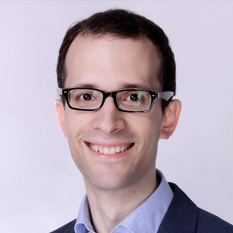
Dr. Vincenzo Pecunia
View More

Dr. Vincenzo Pecunia
Soochow University, China
Prof. Vincenzo Pecunia, Ph.D. Cantab., is the founder and leader of the Pecunia Group of Thin-Film Optoelectronics (www.pecunialab.com) at the Institute of Functional Nano & Soft Materials, Soochow University, China. His research covers environmentally-friendly, printable semiconductors (organic semiconductors, perovskites, amorphous metal-oxides, and carbon nanotubes), their optoelectronic properties, and their applications in printable optoelectronics and photovoltaics. Prior to establishing the Pecunia Group of Thin-Film Optoelectronics, Pecunia worked full-time for over six years at the Optoelectronics Group of the Cavendish Laboratory, University of Cambridge. Whilst there, he earned his Ph.D. in Experimental Physics and worked as a Postdoctoral Research Associate under the supervision of Professor Henning Sirringhaus, FRS. Prof. Pecunia has published in highly reputable journals such as Nature, Advanced Materials, Advanced Energy Materials, Nano Energy, Advanced Functional Materials, and ACS Nano. Drawing from his research experience, Prof. Pecunia has also authored the books 'Organic Narrowband Photodetectors' (Institute of Physics Publishing, https://iopscience.iop.org/book/978-0-7503-2663-6) and 'Organic and Amorphous-Metal-Oxide Flexible Analogue Electronics' (Cambridge University Press, www.cambridge.org/pecunia).
Title: Printable Nanomaterials Towards Self-Powered IoT
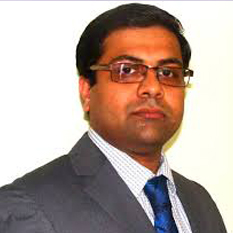
Dr. Vinodkumar Etacheri
View More

Dr. Vinodkumar Etacheri
IMDEA-Materials Institute, Spain
Dr. Vinodkumar Etacheri is the head of Electrochemistry and Nanomaterials group at the IMDEA Materials Institute (Madrid Institute of Advanced Studies), Spain. Dr. Etacheri obtained his PhD in Materials Science from the Technical University of Dublin (TUD), Ireland in 2011. He then completed postdoctoral research at Bar Ilan University (Israel), University of Michigan (USA) and Purdue University (USA) in the area of Li-ion, Li-O2, Li-S and Na-ion batteries. His research interests extent from solar energy conversion to electrochemical energy storage. Dr. Etacheri is author of >50 publications including >30 peer reviewed papers (>8300 citations and an h index of 22), 12 EU/US patents/ patent applications, 6 book chapters, >30 conference publications, >20 invited talks. Three of his publications have been featured in several highly reputable media such as Forbes magazine, USA Today, Smithsonian magazine and Scientific American. He currently serves as reviewer for more than 25 materials science/electrochemistry journals and has been editorial board member of (1) Batteries and (2) Advances in Materials, lead guest editor of: (1) Batteries 2018 special issue on Nanostructured Electrode Architectures for: Electrochemical Energy Storage; (2) Editor of Elsevier book series 2019: Carbon based nanomaterials for advanced thermal and electrochemical energy storage; (3) Guest editor of Batteries 2019 special issue on Solar Cells and Energy Storage. He has been awarded a European Union Framework Programme (FP6) PhD Fellowship, a Michigan Energy Institute fellowship, the ACS-ENVR Merit award-USA and has been R&D 100 award (Oscar of innovation) finalist-USA. More recently, Dr. Etacheri has been awarded a Juan de la Cierva fellowship (2016) by the Spanish Ministry of Science and Innovation, a Talent Attraction Award (2017) from the Regional Government of Madrid, and Ramón y Cajal fellowship (2020) by the Spanish Ministry of Science and Innovation.
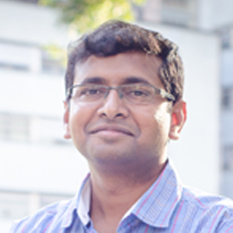
Dr. Vivek Polshettiwar
View More

Dr. Vivek Polshettiwar
TIFR Mumbai, India
Prof. Vivek Polshettiwar, after his Ph.D. in 2005, worked as a postdoc in France and USA for few years before starting his own independent group at KAUST in 2009. In 2013, he moved to TIFR, and his group is working on the development of novel nanomaterials as catalysts to tackle “climate change”. He has published nearly 100 articles with h-index 54 and around 12400 citations in reputed journals like PNAS, Nature Comm, AngewChem, Chem. Sci., ACS Nano, ACS Catalysis etc. He is the recipient of the prestigious ORISE Research Fellowship at US-EPA. He was awarded as Top-25 cited author in 2011 by Tetrahedron and Young Scientist Award at DSL-2012. He also received an Asian Rising Star lectureship at 15th Asian Chemical Congress (ACC), Singapore (2013), from Nobel Laureate Professor Ei-ichi Negish. In 2015, he was admitted as a Fellow of Royal Society of Chemistry (RSC), United Kingdom. He was awarded Bronze medal by Chemical Research Society of India (CRSI), India. He was also recognized as emerging investigator-material science and 175 faces of chemistry by RSC, UK. He was awarded the prestigious Materials Research Society of India - MRSI Medal 2019 and Fellow Maharashtra Academy of Sciences. In 2020, he received Young Research Awards in Nano Science & Technology by DST, Gov. of India.
Title: Nanocatalysts to Capture and Convert CO2 to Fuel
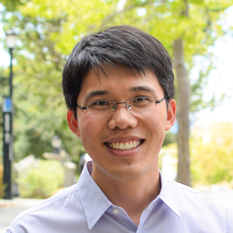
Dr. Wei Gao
View More

Dr. Wei Gao
California Institute of Technology, USA
Wei Gao is an Assistant Professor of Medical Engineering in Division of Engineering and Applied Science at the California Institute of Technology. Originally from China, he earned his BS in mechanical engineering at Huazhong University of Science & Technology and his master’s in precision instruments from Tsinghua University. He received his Ph.D. in Chemical Engineering at University of California, San Diego in 2014 as a Jacobs Fellow and HHMI International Student Research Fellow. In 2014-2017, he was a postdoctoral fellow in the Department of Electrical Engineering and Computer Sciences at the University of California, Berkeley. He a recipient of IEEE Sensor Council Technical Achievement Award, Sensors Young Investigator Award, MIT Technology Review 35 Innovators Under 35 Global List (TR35) and ACS Young Investigator Award (Division of Inorganic Chemistry). He is a World Economic Forum Young Scientist (Class 2020), a member of Global Young Academy (Class 2019) and an ACS Nano Junior Fellow. His research interests include wearable devices, biosensors, flexible electronics, micro/nanorobotics, and nanomedicine. He has authored 100 publications in these fields and his articles have been cited more than 11,500 times (h-index: 57) as of May 2020. His work has been covered in a number of media worldwide including Nature, Science, The Wall Street Journal, New York Times, Time, Fortune, The Economist, Washington Post, NBC News, Discovery News, BBC News, Daily Mail, The Guardian, The Times, LA Times, Newsweek, Forbes, Fox News, Xinhua, Scientific American, IEEE Spectrum, MIT Technology Review, etc. For more information about Gao’s research and publications, visit www.gao.caltech.edu/.
Title: Skin-interfaced Wearable Sweat Biosensors
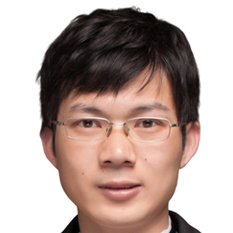
Dr. Weiping Wu
View More

Dr. Weiping Wu
CAS Shanghai, China
Dr Weiping Wu is a Professor at the Shanghai Institute of Optics and Fine Mechanics (SIOM), Chinese Academy of Sciences (CAS) in Shanghai, China. From 2010 to 2020, he worked at the University of Cambridge as a Research Associate, then a Research Fellow at the Optoelectronics Research Centre (ORC) at University of Southampton. Professor Wu has published more than 50 papers with total citations over 4000 and an h-index of 31. His research covers many areas, such as functional materials, polymers, 2D materials, printed electronics, RF electronics, nano photonics, metamaterials, sensors and instrumentations. He is the PI and co-PI of research project funded by the UKRI, Innovate UK, UK’s National Synchrotron Light Source Diamond and industrial companies. He is a Senior Member of Optical Society (OSA), the chairman of SCI Chinese UK Group, vice chair of SCI Materials Chemistry Group and a committee member of International Union of Pure and Applied Chemistry (IUPAC) Division VI.
Title: Multifunctional Carbon Nanomaterials for Energy Applications
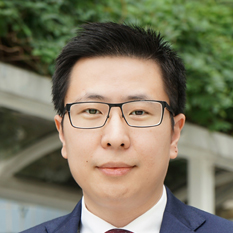
Dr. Yu Chai
View More

Dr. Yu Chai
City University of Hong Kong, Hong Kong
Dr. Yu Chai is an assistant professor in the physics department at the City University of Hong Kong. He joined CityU in April 2020. Before that, he worked as a postdoctoral researcher at the University of California, Berkeley, and Lawrence Berkeley National Laboratory with Prof. Thomas P. Russell and Dr. Paul D. Ashby. Dr. Yu Chai got his Ph.D. in physics at the University of Waterloo, Canada, in 2016 under the supervision of Prof. James A. Forrest. He has a long-term research interest in soft matter with a particular focus on surfaces and interfaces.
Title:Using atomic force microscopy to study soft matter at interfaces
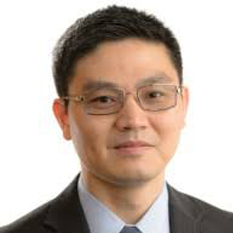
Dr. Yuan Chen
View More

Dr. Yuan Chen
The University of Sydney, Australia
Editor, Carbon (Elsevier) and Journal of Alloys and Compounds
Yuan Chen received a bachelor’s degree from Tsinghua University, China, and a Ph.D. from Yale University, USA. He is currently a professor at The University of Sydney, Australia. His research focuses on carbon materials and their sustainable energy and environmental applications, including supercapacitors, batteries, electrocatalysts, membranes, and antibacterial coatings. He received the Australian Research Council Professorial Future Fellowship in 2016, an Excellence in Review Award from Carbon in 2015, a Young Scientist Award from the Singapore National Academy of Science in 2011. He is a fellow of the Royal Society of Chemistry (UK) and Institution of Chemical Engineer. He is also currently serving as an editor for Carbon (Elsevier) and Journal of Alloys and Compounds.
Title: Carbon composites for one-dimensional wearable energy storage devices
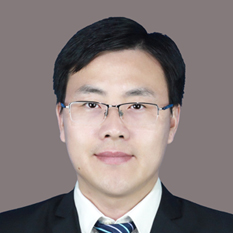
Dr. Yuelong Li
View More

Dr. Yuelong Li
Nankai University, China
Yuelong Li received his Ph.D. degree from the Korea Institute of Science and Technology (KIST) in 2012. He did his postdocs at the University of California-San Diego (UCSD) and the Spanish National Research Council as the Marie Curie Fellow. He worked at the University of Oxford (2015) and the University of Cambridge (2018) as a visiting scholar. In 2016, he joined Nankai University as an associate professor. His research focuses on optoelectronic materials and devices such as perovskite solar cells, tandem solar cells, perovskite single crystals, and flexible energy electronics. He published over 50 papers in renowned academic journals such as Energy & Environmental Science, Nature Communications, Nano Letters, Nano Energy, and Advanced Functional Materials and so on. Among them, he has over 30 papers as the first author or corresponding author. He had several invited or oral talk and was as the Session Chairman and Organizer in the international conference. Personal website: Yuelong Li: https://www.x-mol.com/groups/nku_feel Yuelong Li @ Research gate: https://www.researchgate.net/lab/Yuelong-Li-Lab
Title: Efficient Solar Cells via Interfacial Engineering
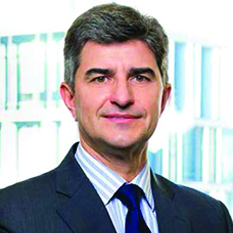
Dr. Yury Gogotsi
View More

Dr. Yury Gogotsi
Drexel University, USA
Associate Editor, ACS Nano
Dr. Yury Gogotsi works on synthesis and surface modification of inorganic nanomaterials, such as nanodiamond, carbide-derived carbons, nanotubes, and two-dimensional carbides and nitrides (mxenes). His group also explores energy related and other applications of materials discovered and developed in gogotsi lab. He works on carbon and carbide nanomaterials with tunable structure and porosity had a major impact on the field of capacitive energy storage. His areas of study are materials science and engineering and nanomaterials
Title: MXenes – from Science to Technology
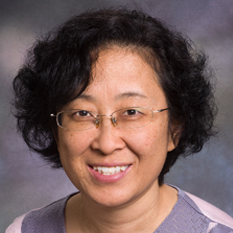
Dr.Yun Liu
View More

Dr. Yun Liu
The Australian National University, Australia
Professor Yun Liu is a graduate of the Xian Jiaotong University, China with her BSc, MSc and PhD degree. She held a position at the National Institute of Advanced Industrial Science and Technology (AIST), Japan (1998-2001). She joined the Research School of Chemistry, the Australian National University in 2001 initially as a postdoctoral fellow and was promoted to Professor in 2015. She has published extensively in the fields of advanced materials. Her fundamental research in materials chemistry and applied physics is closely associated with applied research on electronic/electrical technology, energy and environment. This includes the investigation of structure-property relationship of polar functional materials for various practical applications, novel catalysts’ design and development for hydrogen generation and storage as well as wastewater treatment. She filed over 40 patents and published over 250 Journal papers, including the papers in Nature Materials and Advanced Materials etc. Yun has received numerous innovative awards as well as prestigious fellowships, such as the AIST (1998-1999) and STA Fellow (now JSPS Fellow, 1999-2001) in Japan, and Australian Research Council (ARC) Queen Elizabeth II (2006-2010) and Future Fellow (2011-2015) in Australia. She is a Fellow of the Australian Institute of Physics (FAIP), Chair of Materials Chemistry Division of the Australian Royal Chemistry Institute, and President of Australian Neutron Beam User Group (ANBUG) . e Chair of the IUPAC Subcommittee on Polymer Terminology and since 2000 a member of the Board of the journal Polymer International.
Title: New strategy of materials design for photoexcited functional materials in energy applications
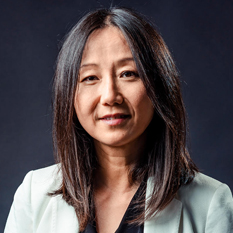
Dr. Zhenan Bao
View More

Dr. Zhenan Bao
Stanford University, USA
Zhenan Bao is Department Chair and K.K. Lee Professor of Chemical Engineering, and by courtesy, a Professor of Chemistry and a Professor of Material Science and Engineering at Stanford University. Bao founded the Stanford Wearable Electronics Initiate (eWEAR) in 2016 and serves as the faculty director. Prior to joining Stanford in 2004, she was a Distinguished Member of Technical Staff in Bell Labs, Lucent Technologies from 1995-2004. She received her Ph.D in Chemistry from the University of Chicago in 1995. She has over 550 refereed publications and over 65 US patents with a Google Scholar H-Index >160. Bao is a member of the National Academy of Engineering and the National Academy of Inventors. She is a Fellow of MRS, ACS, AAAS, SPIE, ACS PMSE and ACS POLY. Bao was selected as Nature’s Ten people who mattered in 2015 as a “Master of Materials” for her work on artificial electronic skin. She was awarded the inaugural ACS Central Science Disruptor and Innovator Prize in 2020, the Gibbs Medal by the Chicago session of ACS in 2020, the Wilhelm Exner Medal by Austrian Federal Minister of Science 2018, ACS Award on Applied Polymer Science 2017, the L'Oréal-UNESCO For Women in Science Award in the Physical Sciences 2017, the AICHE Andreas Acrivos Award for Professional Progress in Chemical Engineering in 2014, ACS Carl Marvel Creative Polymer Chemistry Award in 2013, ACS Cope Scholar Award in 2011, the Royal Society of Chemistry Beilby Medal and Prize in 2009, the IUPAC Creativity in Applied Polymer Science Prize in 2008. Bao is a co-founder and on the Board of Directors for C3 Nano and PyrAmes, both are silicon-valley venture funded start-ups. She serves as an advising Partner for Fusion Venture Capital.
Title: Skin-inspired organic electronics